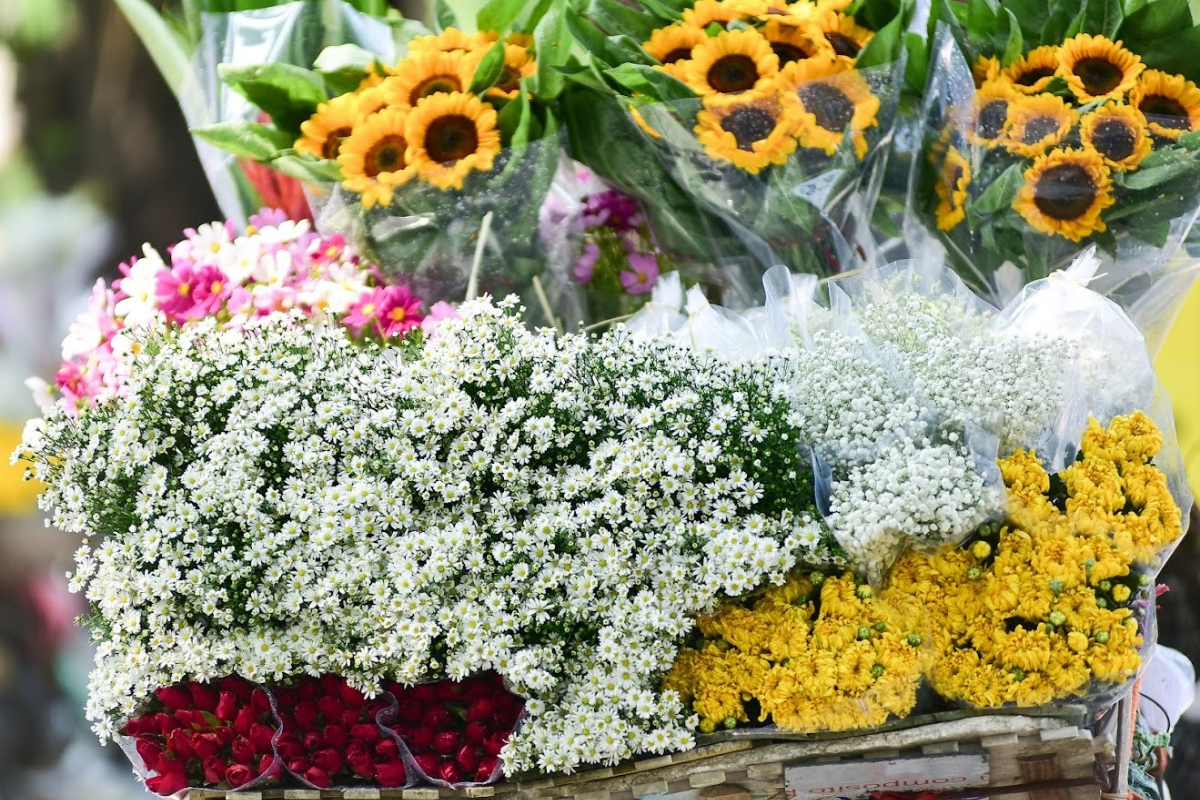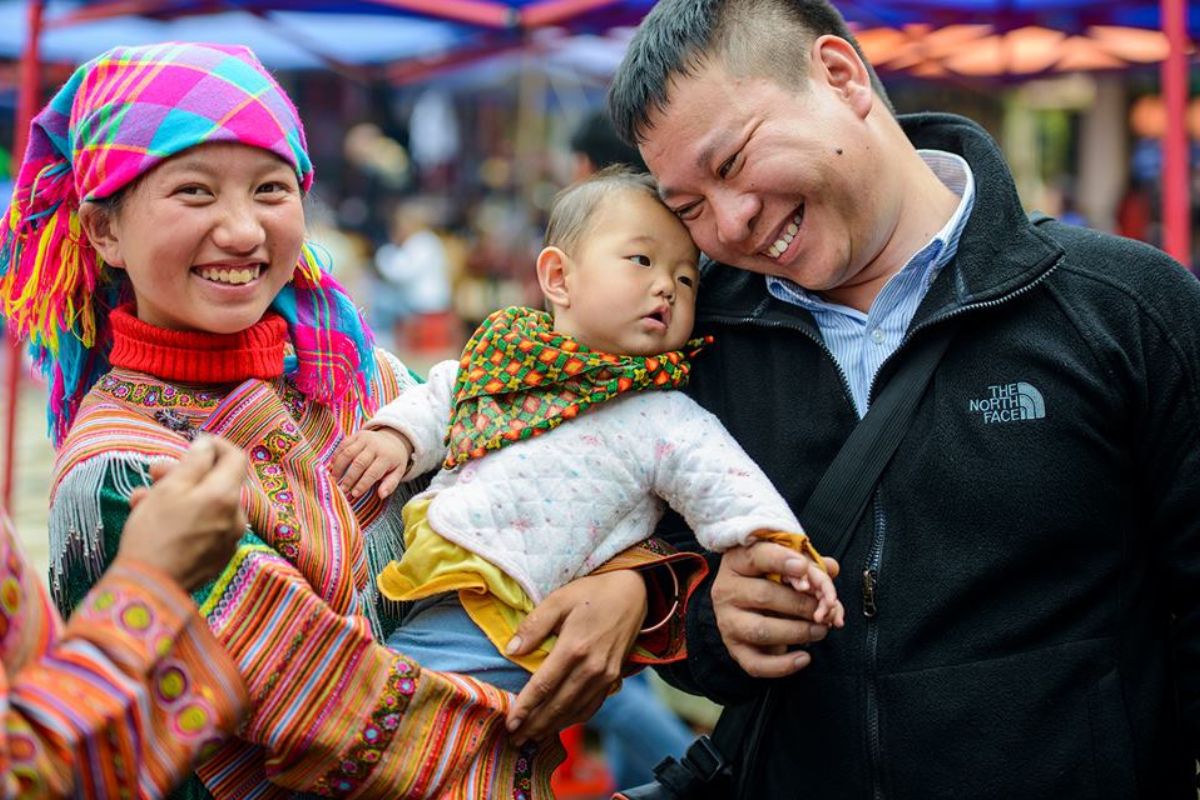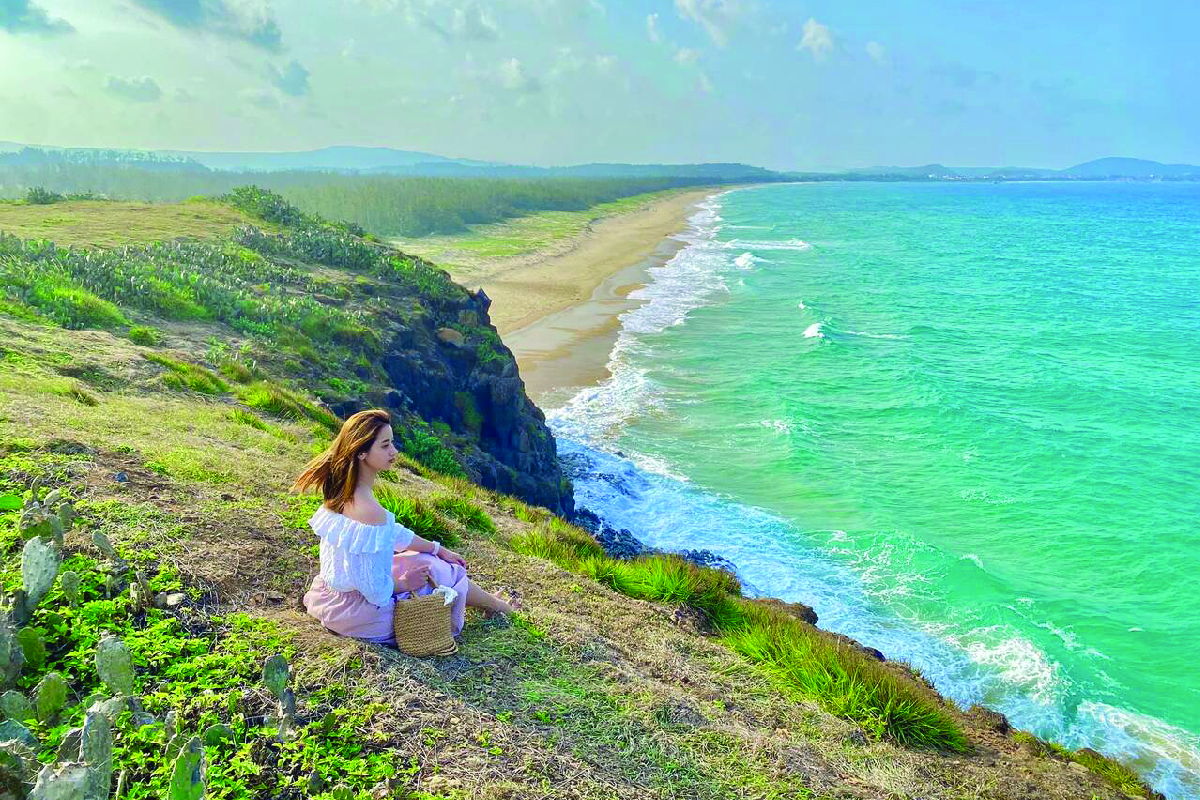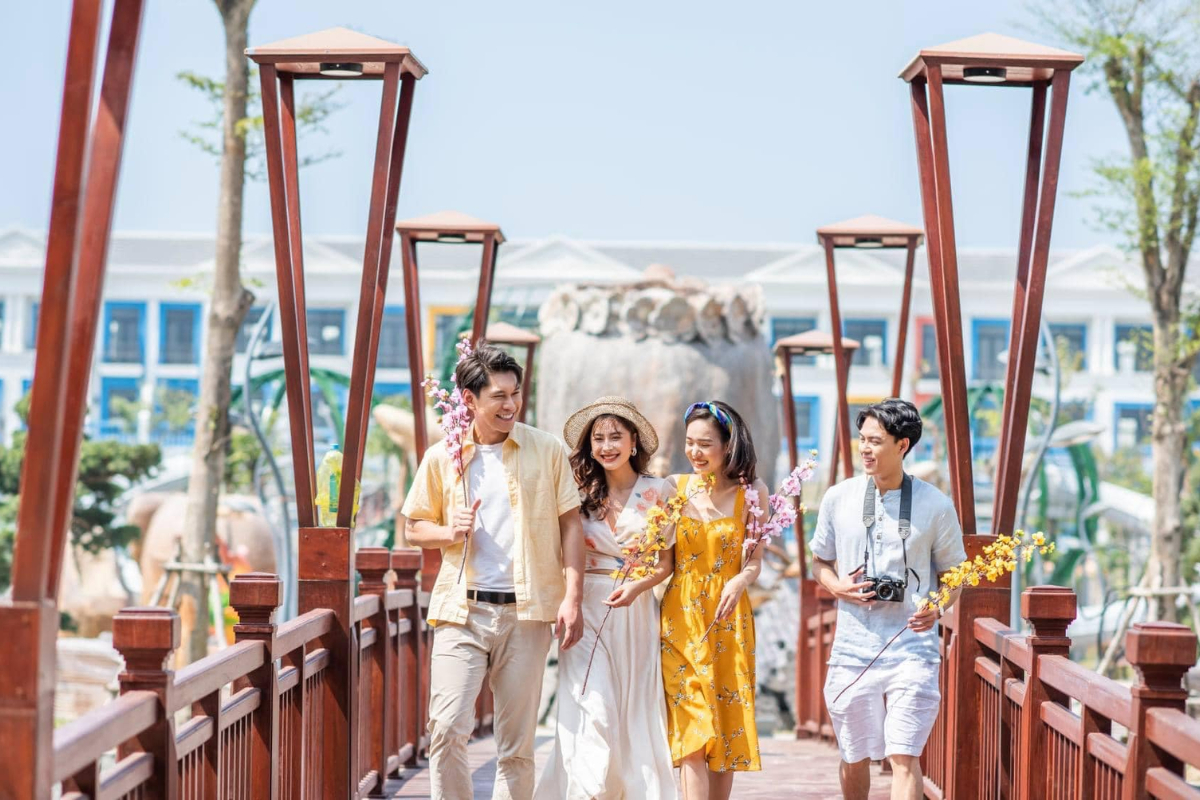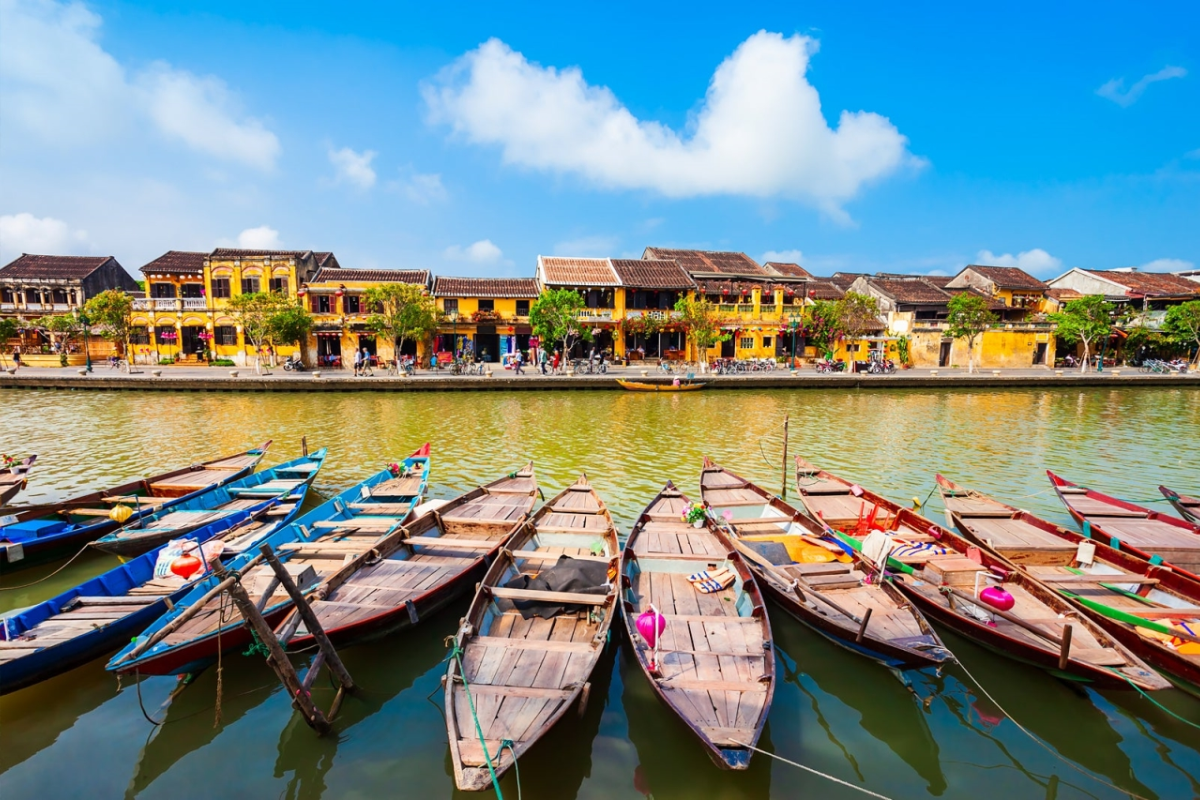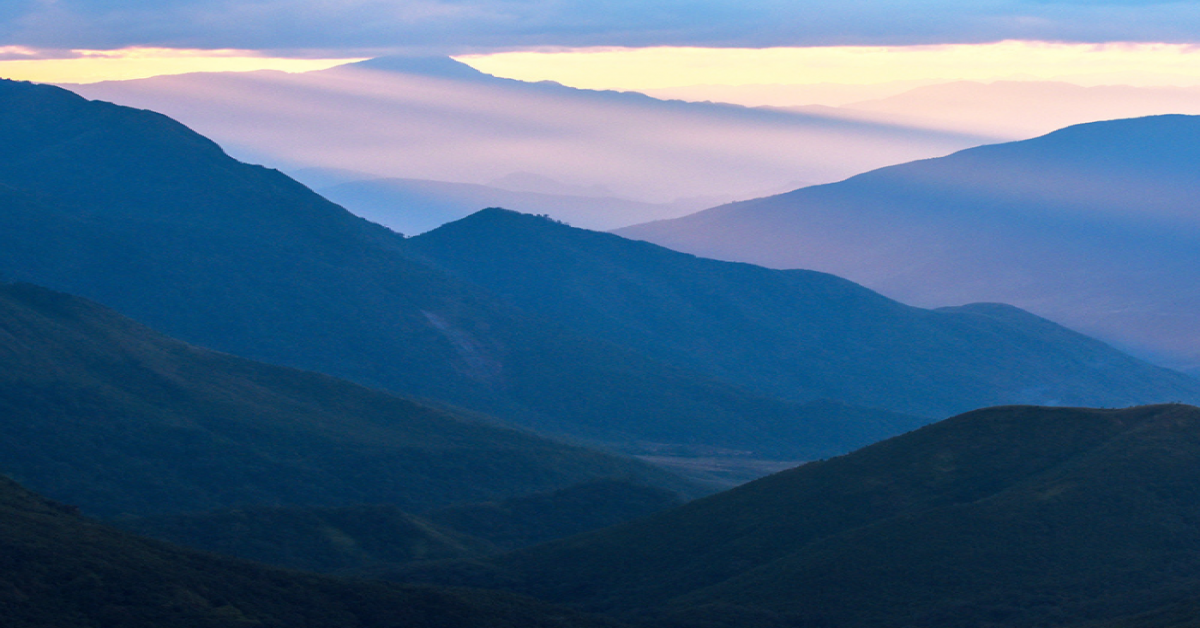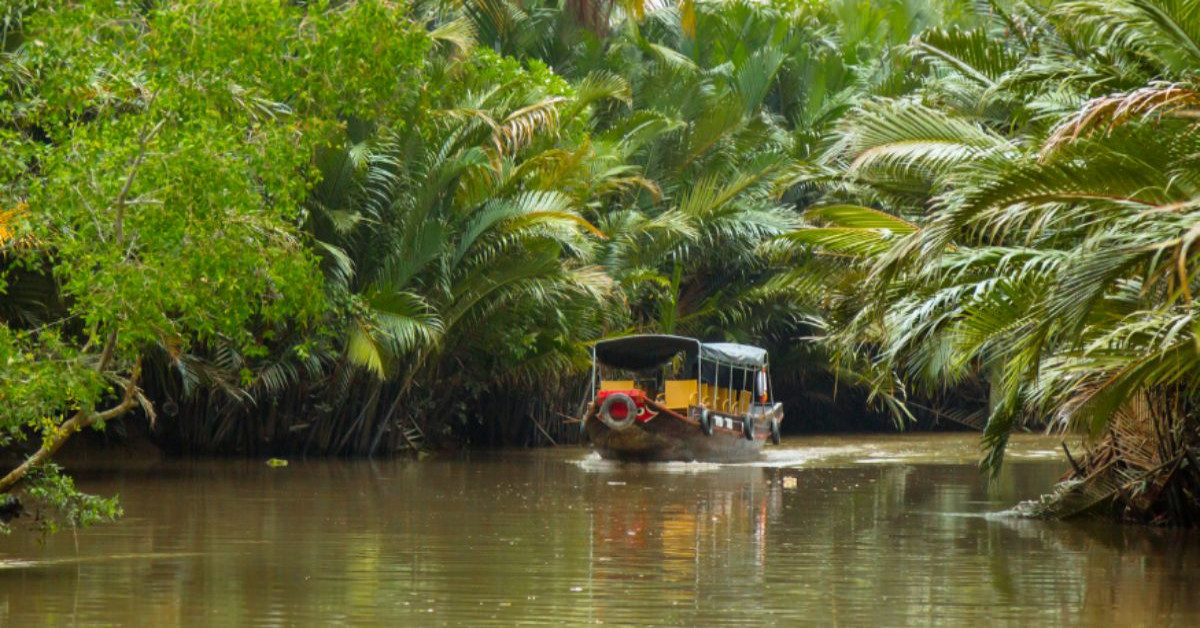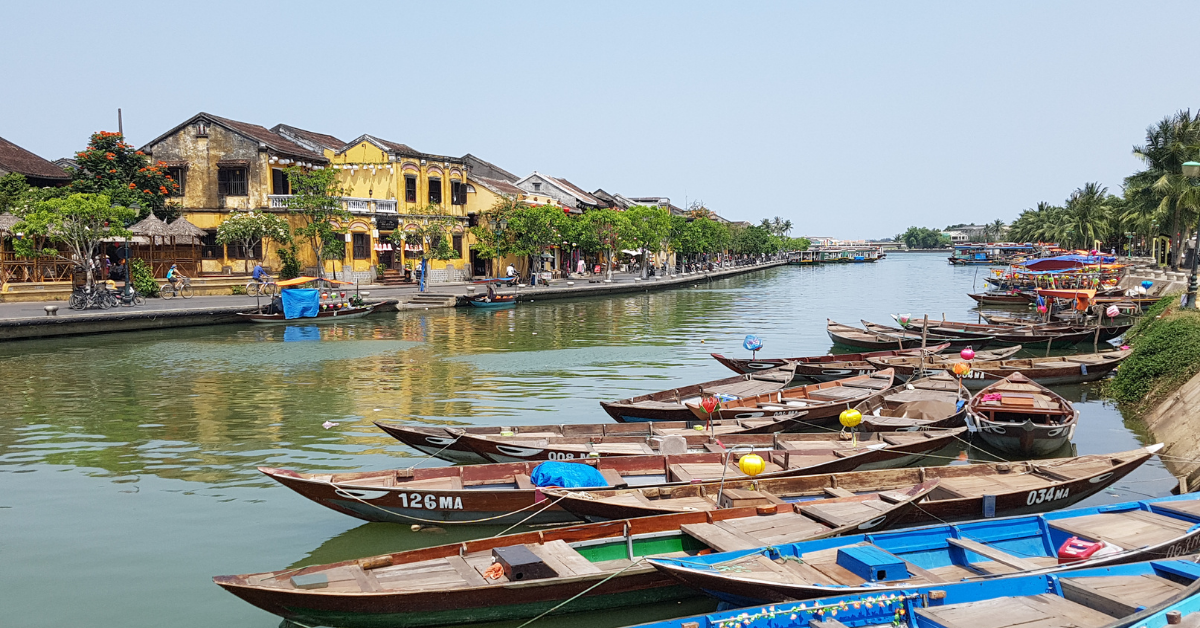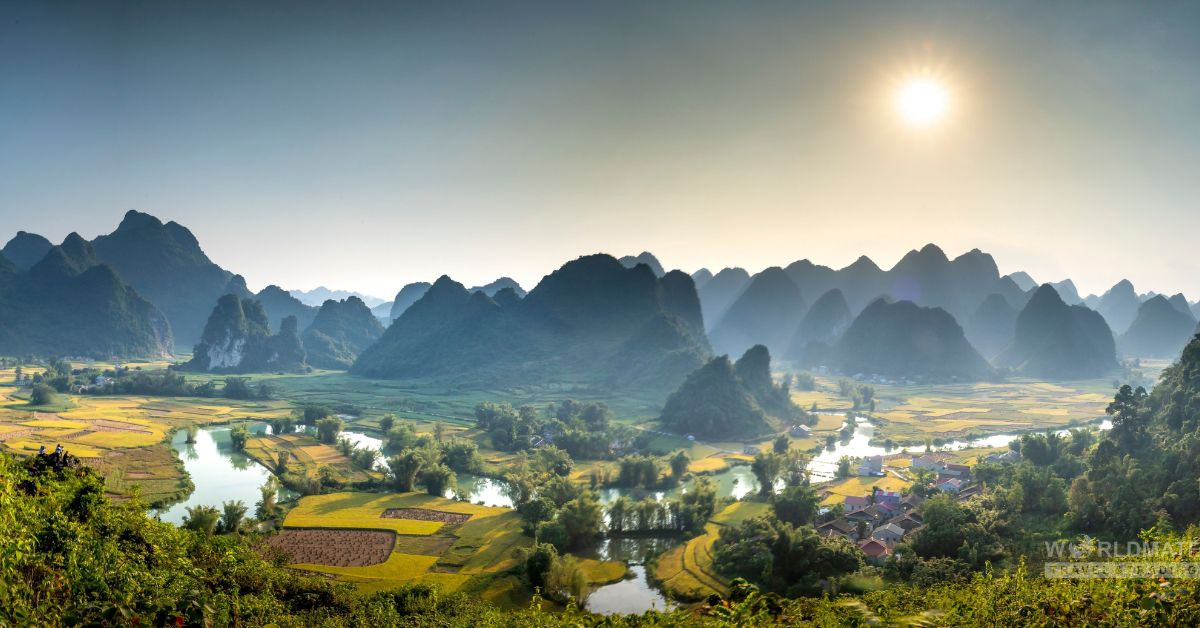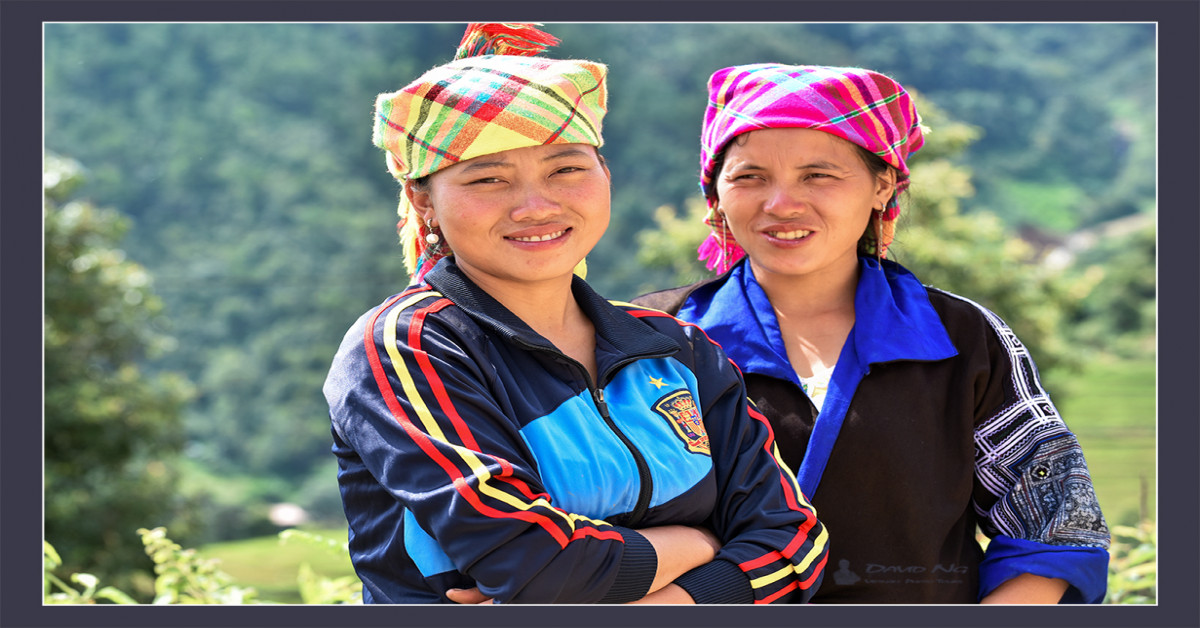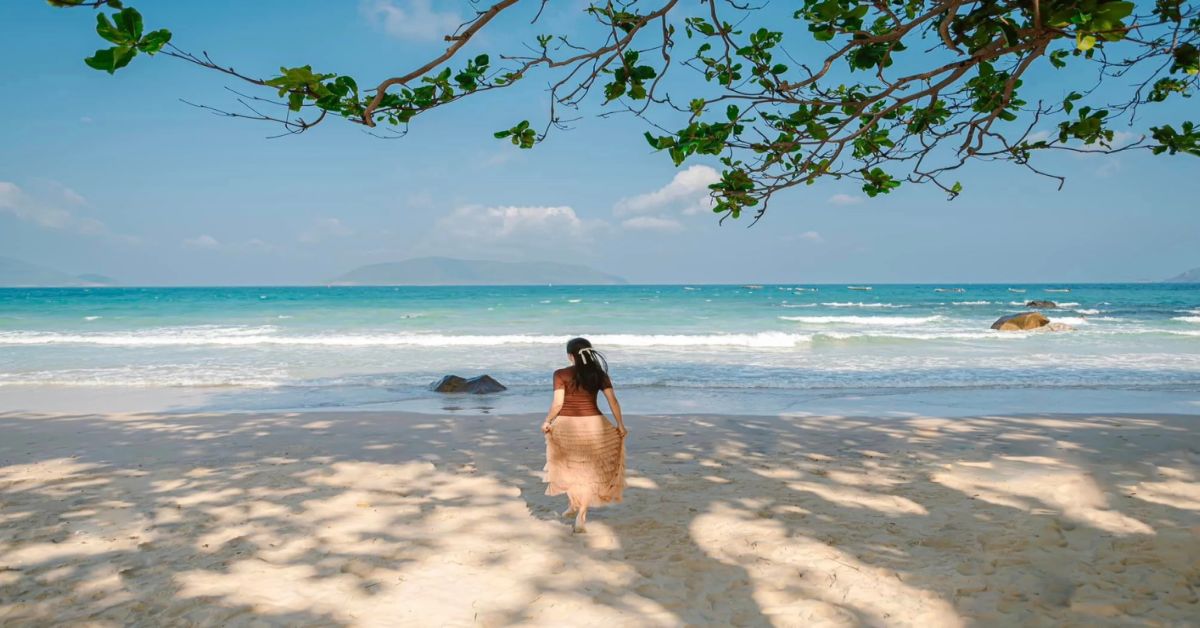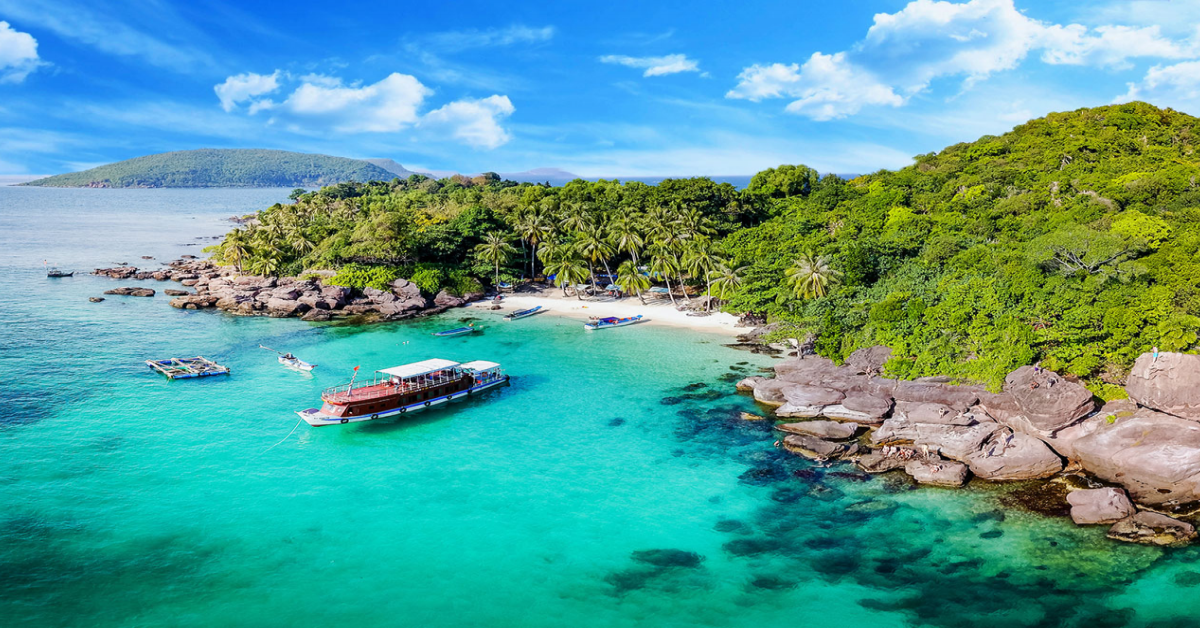Vietnam Travel Guide: Discover Culture, Nature, and the Best Time to Visit
Vietnam travel is a captivating journey of exploration, inviting visitors to uncover a land where rich cultural heritage, striking natural landscapes, and an adventurous spirit converge. Use this complete guide to get ready for your next adventure!
.png-image-nzmdobuv.png)
Vietnam is situated in Southeast Asia and shares its borders with China, Laos, and Cambodia. It spans more than 3,000 kilometers along a scenic coastline. This geographical position endows Vietnam with awe-inspiring natural scenery, including over 125 unspoiled beaches and some of the globe’s most picturesque bays. In addition, Vietnam boasts more than 3,000 nationally recognized heritage sites, many of which are acknowledged as UNESCO World Heritage Sites, making it a true cultural and historical gem.
The culture of Vietnam is a vibrant fabric woven from 4,000 years of history and shaped by 54 different ethnic groups. Each ethnic group brings its own traditions, customs, and cultural values, creating a dynamic and diverse society. Among Vietnam’s intangible cultural heritages are the royal court music of Hue, the Gong culture found in the Central Highlands, and the ancestral worship of the Hung Kings—each reflecting the depth of Vietnamese cultural identity.
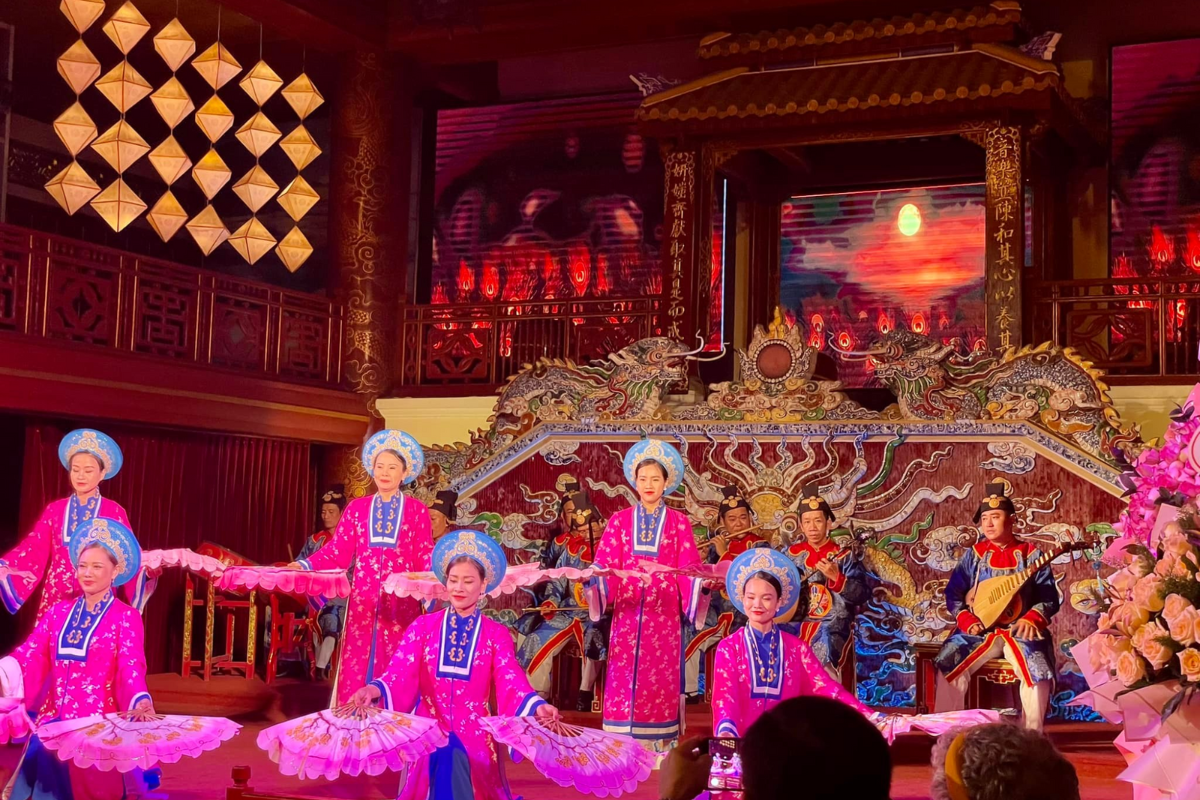
Vietnamese people are known for their warm hospitality, which contributes greatly to the country's charm. Their resilience and dedication to preserving age-old traditions make Vietnam an inviting place for all travelers. Its delicious and vibrant cuisine further enhances its appeal, especially for culinary enthusiasts. Regularly ranked among the world’s safest and most budget-friendly travel destinations, Vietnam offers an extraordinary journey of discovery that is sure to leave a lasting impression.
Geographical Highlights of Vietnam
Vietnam lies on the Indochina Peninsula in Southeast Asia. In terms of geography, it borders China to the north, Laos and Cambodia to the west, and the East Sea to the east. The country's mainland forms an “S” shape, stretching between latitudes 23°23’N and 8°27’N. Vietnam measures about 1,650 kilometers from north to south, with its widest part being approximately 500 kilometers and the narrowest part only 50 kilometers wide.
• Terrain
One of the geographical facts about Vietnam is its highly varied terrain, which includes mountains, plains, coastal areas, and continental shelves. Mountainous and hilly regions make up about 75% of the country’s land area. Around 85% of the terrain lies below 1,000 meters in elevation, while only 1% of the land reaches heights above 2,000 meters. Plains account for roughly 25% of the mainland and are segmented by several mountain ranges. The country’s coastline extends for 3,260 kilometers, from Mong Cai in the north to Ha Tien in the south.
.png-image-yifwmkmz.png)
• Vietnam's Climate
Vietnam’s weather varies depending on the season, altitude, and region. The country is divided into two main climatic zones, each with its own seasonal patterns. Northern Vietnam has a tropical monsoon climate, featuring four seasons: spring, summer, autumn, and winter. Southern Vietnam enjoys a tropical climate year-round, with two distinct seasons: dry and rainy.
Being located in the tropical zone, Vietnam experiences consistently high temperatures and humidity throughout the year. Average temperatures typically range between 21°C and 27°C and increase gradually from north to south. In the northern winter months, temperatures can drop sharply and even bring snow in some areas. Vietnam also benefits from abundant sunshine, with 1,400 to 3,000 hours of sunlight annually. Average yearly rainfall ranges from 1,500 to 2,000 millimeters, and humidity levels generally stay around 80%.
• Ecosystem in Vietnam
Vietnam is celebrated for its rich ecosystems, housing around 14,600 species of plants. The country’s fauna is equally impressive, with many rare species listed in the global Red Book. Vietnam’s animal population includes roughly 275 species of mammals, 800 species of birds, 180 types of reptiles, 80 kinds of amphibians, 2,400 varieties of fish, and approximately 5,000 insect species.
Nature lovers can visit numerous national parks, biosphere reserves, and protected forests across the country. Notable destinations include Hoang Lien Son (Lao Cai), Cat Ba (Quang Ninh), Cuc Phuong (Ninh Binh), Phong Nha - Ke Bang (Quang Binh), and Can Gio (Ho Chi Minh City), among others.
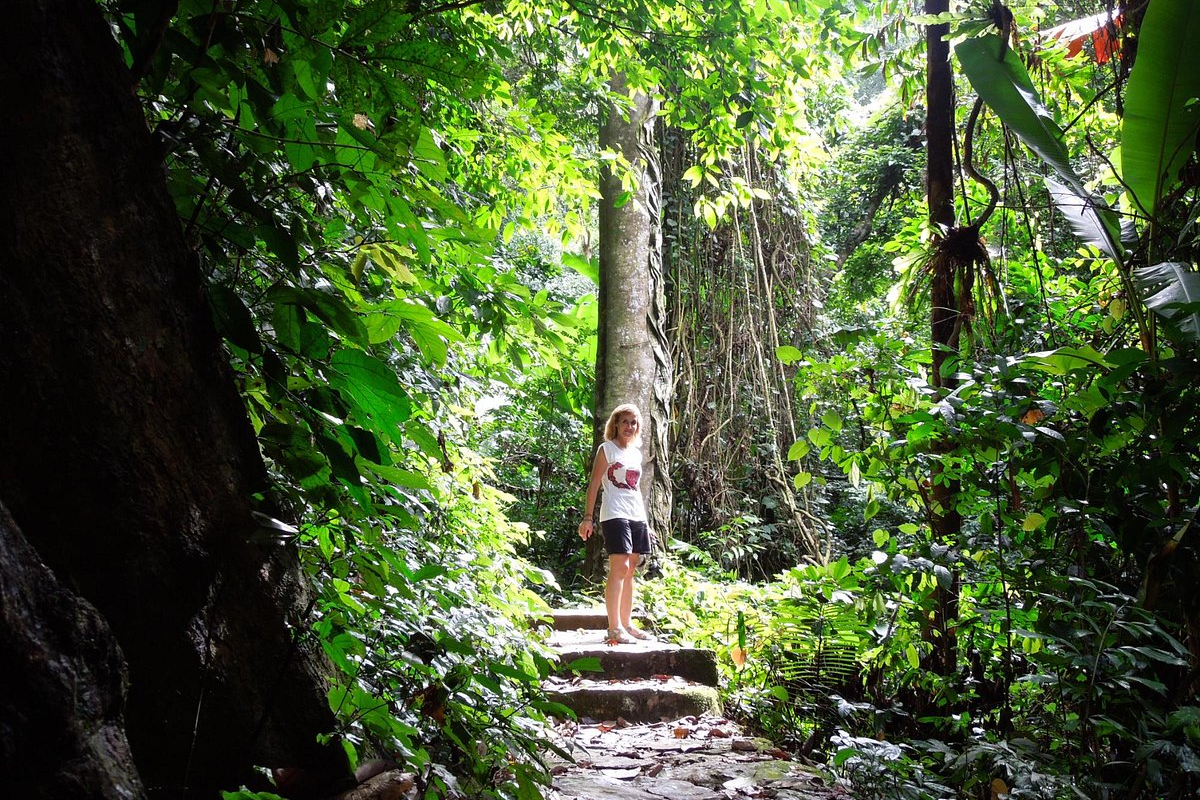
3. A Glimpse into Vietnam’s Historical Timeline
Vietnam’s history is rich and far-reaching, shaped by numerous pivotal moments and notable figures.
Early Foundations of Vietnamese Civilization
The earliest known Vietnamese state, Van Lang, emerged in the 7th century BC. This was succeeded by the formations of Au Lac, Van Xuan, Dai Co Viet, and Dai Viet. For over a millennium, Vietnam endured domination by several Chinese dynasties and persistent warfare from the 3rd century BC until the late 10th century AD. The nation achieved independence following a landmark triumph on the Bach Dang River in 938. This led to the establishment of a centralized feudal system under the Ngo (938–965), Dinh (969–979), and Early Le (980–1009) dynasties.
Periods of Reform and Expansion
The Ly (1009–1226), Tran (1226–1400), Ho (1400–1407), and Later Le (1428–1527) dynasties spearheaded major reforms and national growth. This era, often referred to as the “Civilized Age of Dai Viet,” saw significant strides in agriculture, water management, education, science, culture, and governance. However, from the 16th century onwards, internal strife hampered further development.
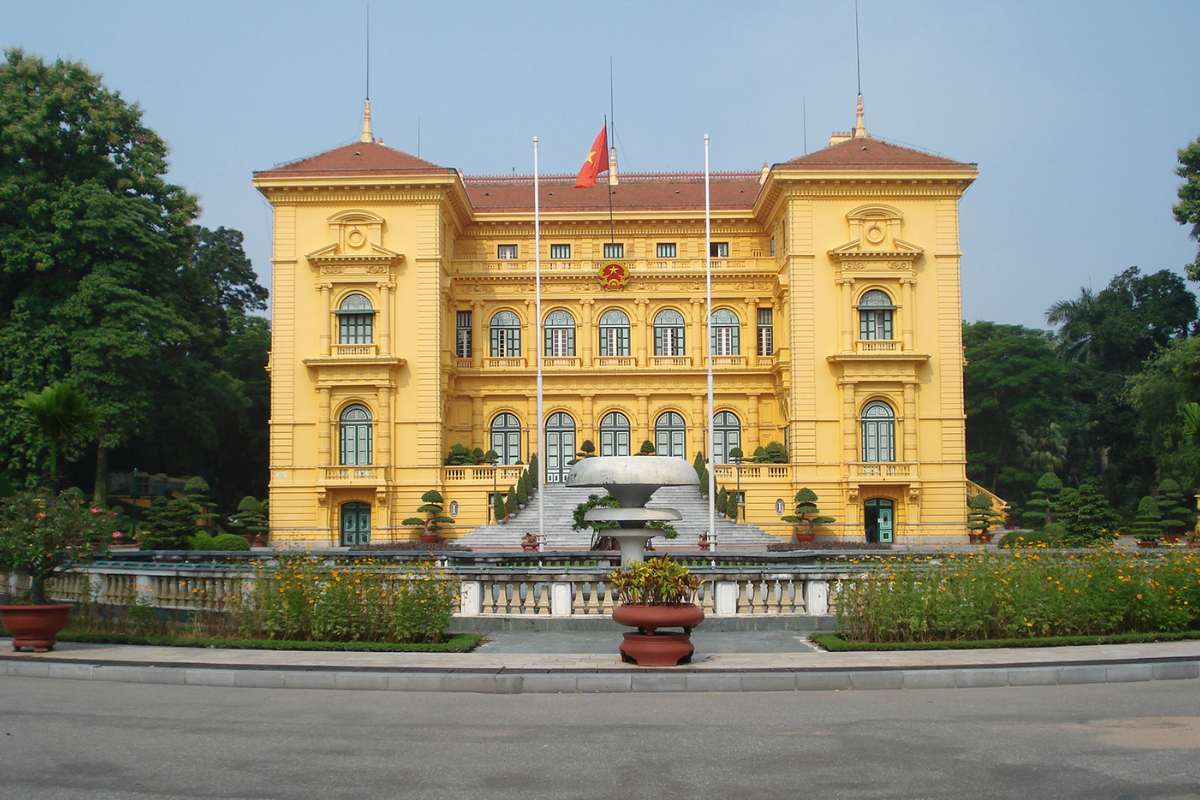
Colonial Era and Struggles for Independence
By the 19th century, France increasingly tightened its grip on Vietnam through missionary and commercial incursions, eventually transforming the country into a semi-feudal colony between 1858 and 1945. The August Revolution of 1945, led by President Ho Chi Minh and the Communist Party, succeeded in toppling colonial rule. This culminated in the declaration of the Democratic Republic of Vietnam on September 2, 1945.
Vietnam’s victory at Dien Bien Phu in May 1954, followed by the Geneva Accords in July of the same year, brought an end to the First Indochina War. The North transitioned to socialism, while the South—backed by the United States—formed the Republic of Vietnam, under President Ngo Dinh Diem. The country remained divided for more than 20 years.
Reunification and National Renewal
From 1954 to 1975, Vietnam endured another prolonged conflict for national reunification, concluding with the decisive Ho Chi Minh Campaign in 1975. This ushered in a new phase of unity and reconstruction, though economic stagnation followed. The Doi Moi (Renovation) reforms initiated in 1986 revitalized the economy through wide-reaching changes.
Currently, Vietnam maintains strategic partnerships with eight major countries, including China, India, the U.S., Russia, South Korea, Japan, France, and Australia. It actively participates in global and regional organizations such as APEC, ASEAN, WTO, UNESCO, and the United Nations.
4. Ideal Seasons to Explore Vietnam
Vietnam stretches across three climatic zones, each offering its own distinct weather patterns. Travelers will encounter an impressive variety of landscapes and conditions—sometimes drastically different within short distances. Knowing these regional patterns is essential for planning a seamless journey.
.png-image-mcuhbalu.png)
Northern Vietnam: Seasons and Conditions
The climate in Northern Vietnam changes dramatically between the mountains and the plains. Highland areas like Sapa and Ha Giang experience dry weather from October to March, with rainfall dominating from April through September. Winters, especially in December and January, can get quite chilly. The best months for trekking and other outdoor activities are March to May and September to November, offering cool and dry conditions.
Lowland zones, such as Hanoi, Ninh Binh, and Ha Long Bay, enjoy a mild winter from November to April, with average temperatures around 17–22°C. Summers, from May to October, bring heavy humidity and rainfall, peaking in July and September, especially near the coast.
.png-image-ofswkvni.png)
Central Vietnam: Climate Through the Year
Central Vietnam experiences noticeable seasonal shifts. Coastal destinations like Hue, Da Nang, and Hoi An face sweltering temperatures from late January to August, often exceeding 35°C. Torrential rains, occasionally accompanied by tropical storms, dominate October and November.
Hue generally has a cooler climate than Hoi An due to its mountainous location. Farther down the coast, cities like Quy Nhon and Nha Trang see prolonged sunny spells, with Nha Trang staying dry until early autumn. Meanwhile, Dalat’s higher elevation results in rainy summers and cool, crisp winters, particularly in the early and late months of the year.
.png-image-oddjjhrb.png)
Southern Vietnam: Tropical Consistency
Southern Vietnam maintains relatively stable weather year-round. Cities like Ho Chi Minh, coastal towns such as Phan Thiet, and the Mekong Delta feature consistent warmth between 25–35°C. The dry period spans from November to early May, gradually becoming hotter and more humid. The rainy season, lasting from May to early November, brings brief but intense afternoon downpours.
Tropical islands like Phu Quoc and Con Dao benefit from favorable conditions throughout the year, with sunny days often continuing even during the monsoon season’s light, predictable showers.
5. Best Places to Visit in Vietnam
5.1. Breathtaking Beaches in Vietnam
Ha Long
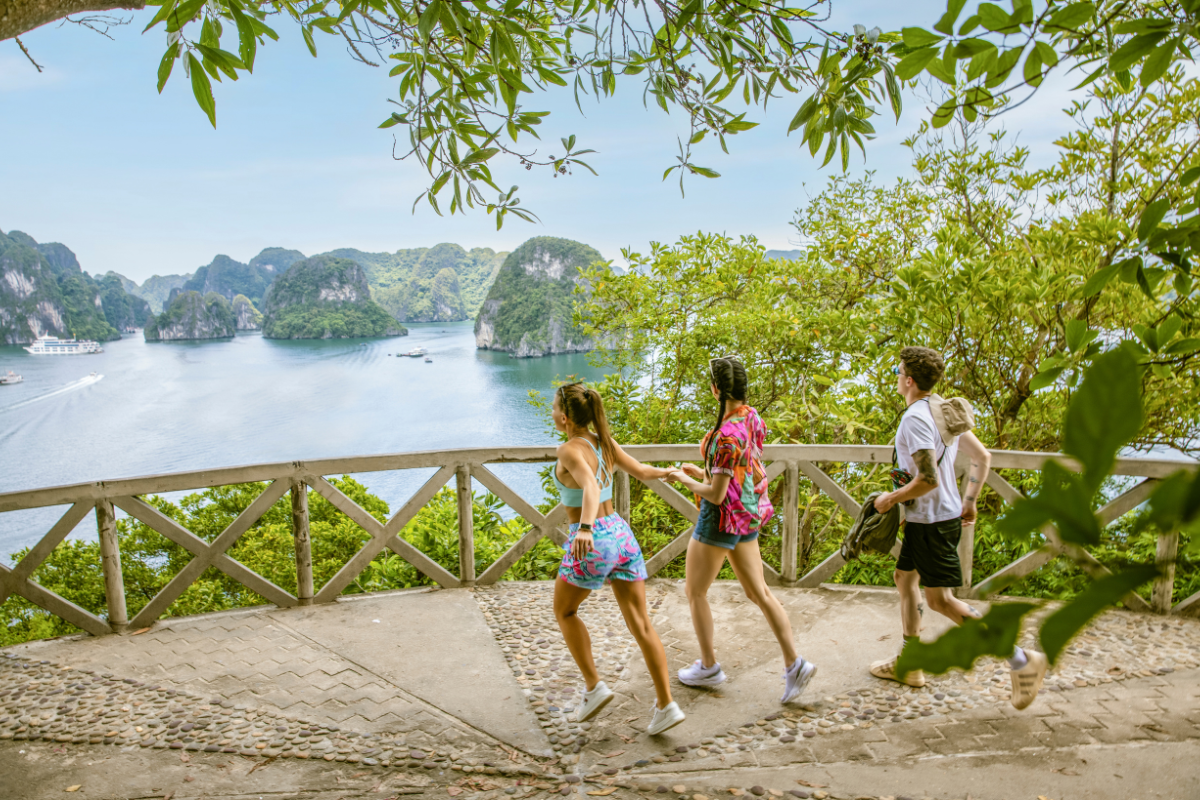
Situated in Northern Vietnam, Ha Long is globally recognized for Ha Long Bay, a UNESCO World Heritage Site renowned for its dramatic limestone karsts and emerald waters. This iconic location is also home to some of the country’s most alluring beaches.
Ti Top Beach, with its crescent shape and soft white sand, offers visitors a steep climb to a panoramic viewpoint. Bai Chay Beach, well-developed and spacious, provides ample opportunities for recreation and relaxation. For a more secluded experience, beaches such as Ngoc Vung, Quan Lan, and Minh Chau offer peaceful retreats.
Local cuisine in Ha Long is deeply connected to the sea, featuring highlights like cha muc (grilled squid cakes), sam (horseshoe crab), and ngan (a native mollusk delicacy).
Da Nang
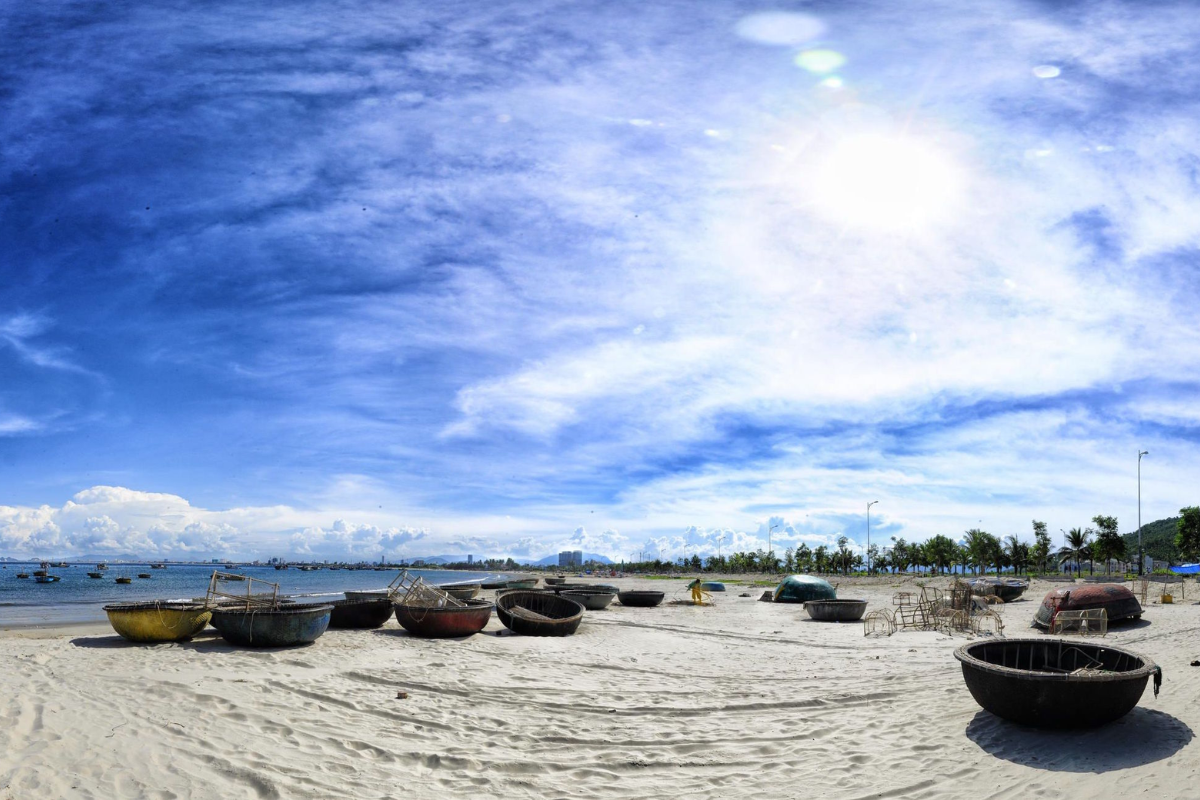
Located in Central Vietnam, Da Nang is a premier beach destination celebrated for its calm seas and pristine sands. My Khe Beach and Non Nuoc Beach, lauded by Tripadvisor in 2017 and 2024, consistently rank among Asia’s finest. The Telegraph has also praised them for their untouched beauty and inviting waters.
Other notable spots include Son Tra, Bac My An, and Nam O beaches, all ideal for swimming, surfing, snorkeling, and boat excursions. Da Nang also boasts a vibrant food scene, offering dishes like Quang noodles, banh trang cuon thit heo (pork rolls), and bun mam nem (noodles with fermented anchovy sauce).
Nha Trang
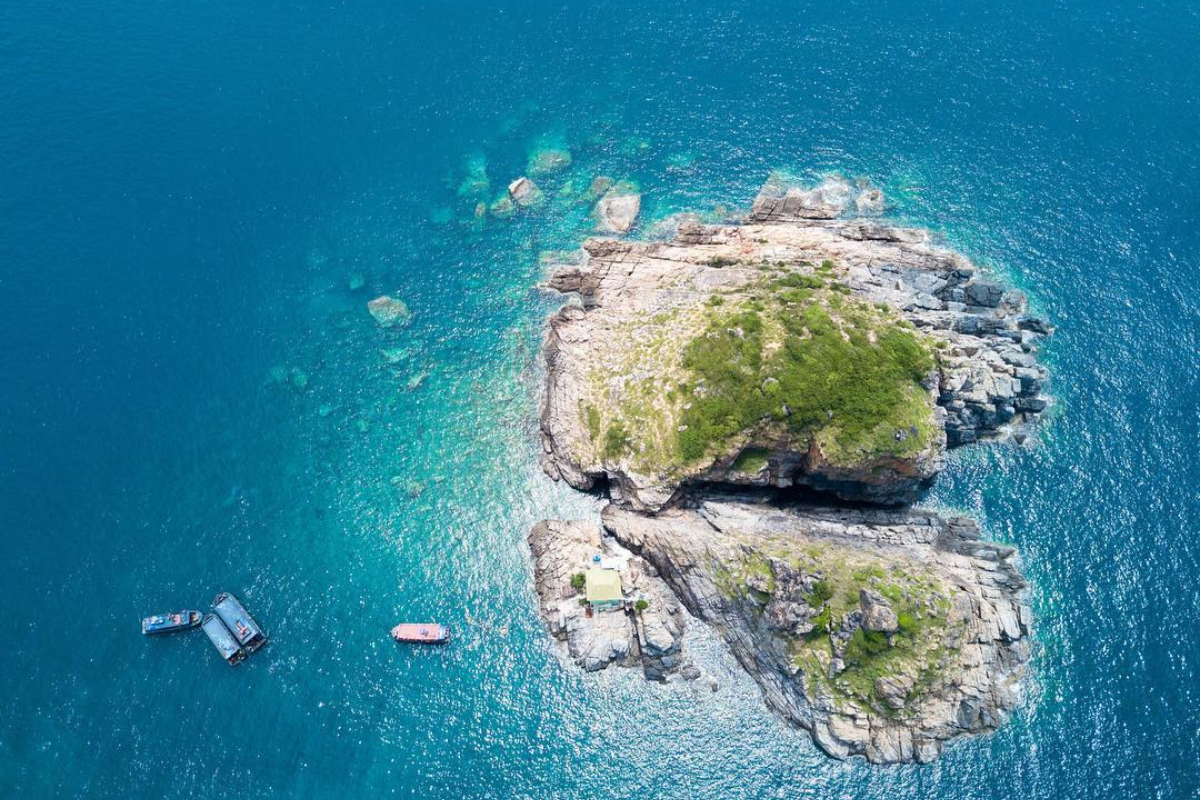
Along Vietnam’s central coast lies Nha Trang, whose bay has been recognized by the “Most Beautiful Bays in the World Club” since 2003. With its soft white sand and clear waters, Nha Trang is home to several charming beaches.
Doc Let Beach is a quiet escape, while Hon Chong Promontory offers stunning photo opportunities. Hon Mun Island is a favorite for snorkeling and diving due to its rich marine biodiversity. Hon Tre Island, with the luxurious Vinpearl resort and VinWonders amusement park, is accessible via a scenic cable car ride over the sea.
The city’s coastal cuisine features standout dishes such as bun ca (fish noodle soup), nem nuong (grilled pork sausage), and banh can (mini rice pancakes).
Phu Quoc
.png-image-lkzmfdqx.png)
Phu Quoc, Vietnam’s largest island, boasts more than 150 kilometers of coastline and some of the country’s most stunning beaches. Sao Beach is famous for its powdery white sand, while Long Beach is ideal for sunsets. Bai Dai Beach offers gentle waves and a relaxed vibe perfect for swimming.
Less crowded shores like Khem Beach, Ganh Dau, and Ong Lang provide peaceful escapes. Just offshore, islets such as May Rut, Gam Ghi, and Fingernail Island are prime snorkeling spots. The island also hosts Phu Quoc National Park, adding forested charm to its seaside appeal.
Culinary specialties include Phu Quoc fish sauce, bun quay (self-stirred seafood noodles), fresh herring salad, and grilled squid seasoned with the island’s famous pepper.
Phan Thiet
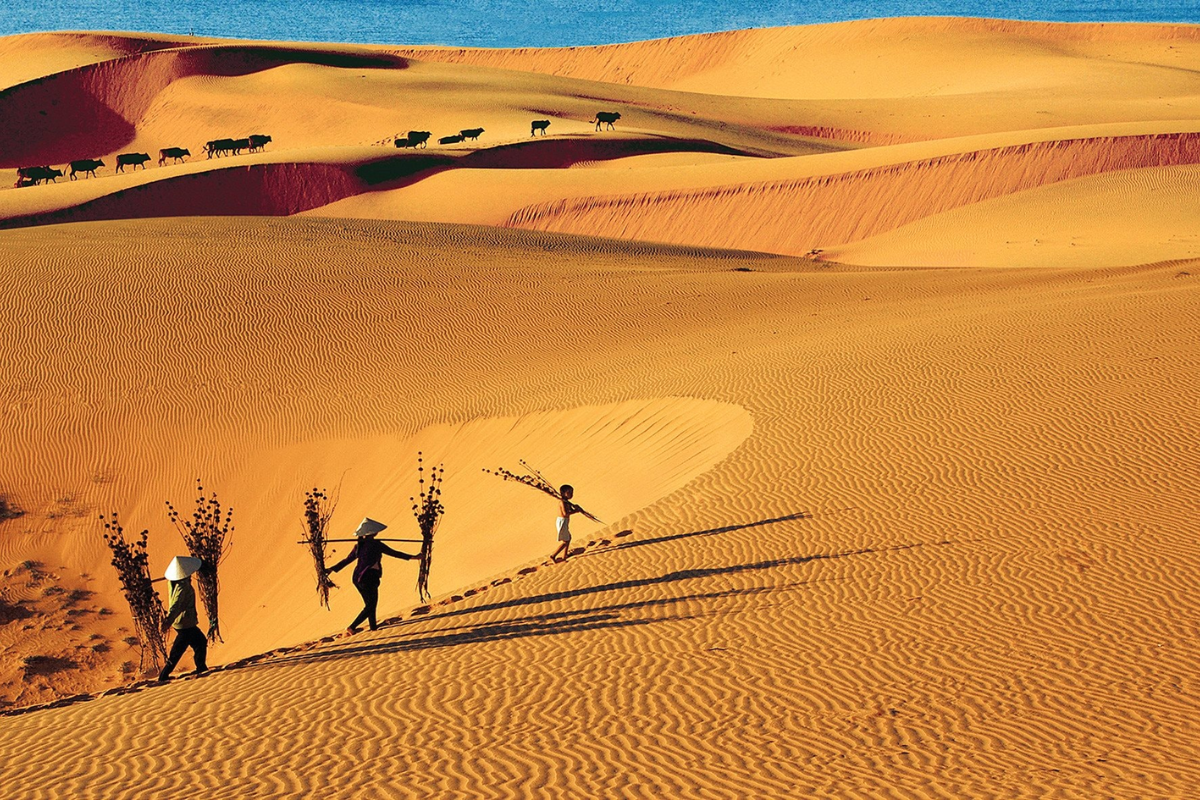
Phan Thiet, once a humble fishing town in Binh Thuan Province, has grown into a favored beach destination. Its coastline features unique golden sands and wind-carved dunes reminiscent of a desert landscape.
Mui Ne Beach is famous for palm-fringed shores and excellent windsurfing conditions. Adventurous travelers can try sandboarding or ride ATVs across the nearby red and white sand dunes. Other popular beaches include Hon Rom for water sports, Ke Ga with its scenic lighthouse, and Bai Rang, a top choice for yoga and snorkeling.
The local culinary scene shines with banh can (grilled rice pancakes), fresh seafood, artisanal fish sauce, and the region’s signature dragon fruit.
6. Top Things to Do in Vietnam
Stretching from the rugged north to the lush south, Vietnam presents a captivating journey through some of Southeast Asia’s most stunning experiences.
6.1. Scale the Majestic Mountains
Vietnam’s mountainous regions are a dream for trekking enthusiasts, especially in the northwest. The iconic Fansipan, known as the "Roof of Indochina", towers at 3,143 meters and is surrounded by scenic trails ideal for hiking adventures.
Other notable trekking spots include Sapa, Lao Than Peak, Ta Xua, Bach Moc Luong Tu, Lung Cung, and Pusilung. These paths offer striking views and a glimpse into the lifestyles of local ethnic communities.
.png-image-rjdagboh.png)
6.2. Unveil the Wonders of Vietnam's Caves
Vietnam boasts some of the world’s most spectacular cave systems. Provinces like Quang Binh, Ninh Binh, and Quang Ninh are rich with caverns, including globally renowned formations within Phong Nha - Ke Bang National Park such as Son Doong and Paradise Cave.
Elsewhere, Ninh Binh's Trang An and Tam Coc offer boat rides through limestone grottos, and Ha Long Bay’s caves like Sung Sot and Luon combine breathtaking rock formations with emerald waters.
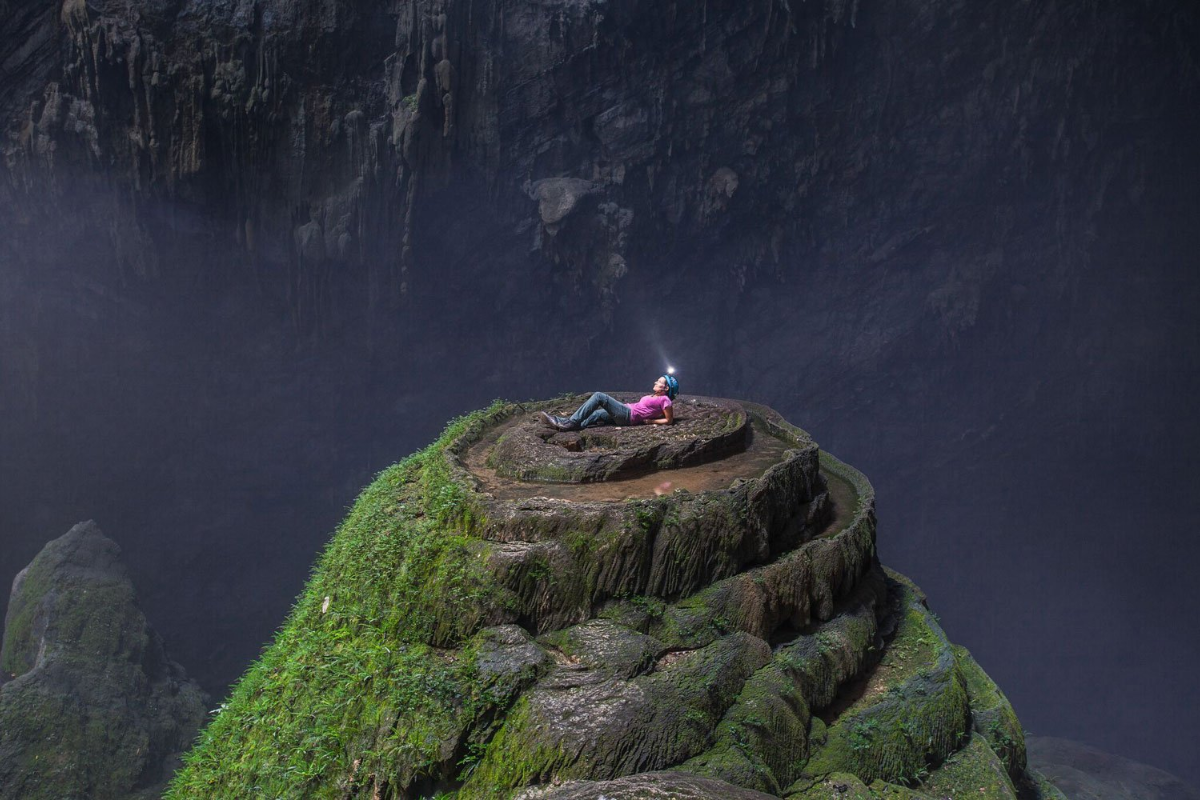
6.3. Embrace the Tranquility of the Countryside
Vietnam’s rural landscapes offer a peaceful escape. From 2022 to 2024, UN Tourism recognized Thai Hai, Tan Hoa, and Tra Que villages as among the world’s top rural tourism destinations.
In these communities, travelers can cycle past rice paddies and stilt houses, explore traditional herbal gardens, and discover enduring customs in serene surroundings.
.png-image-ylrplmcn.png)
6.5. Discover Vietnam’s Museums
Vietnam’s museums are rich with historical, artistic, and cultural treasures. In Hanoi, the Ho Chi Minh Museum and National Museum of History offer insights into the nation's past. Da Nang’s Cham Sculpture Museum preserves Cham heritage, while Khanh Hoa’s Oceanographic Museum showcases marine biodiversity.
In Ho Chi Minh City, the Museum of Fine Arts and War Remnants Museum offer artistic and historical perspectives. Other must-visits include the Ethnology Museum and Southern Women’s Museum.
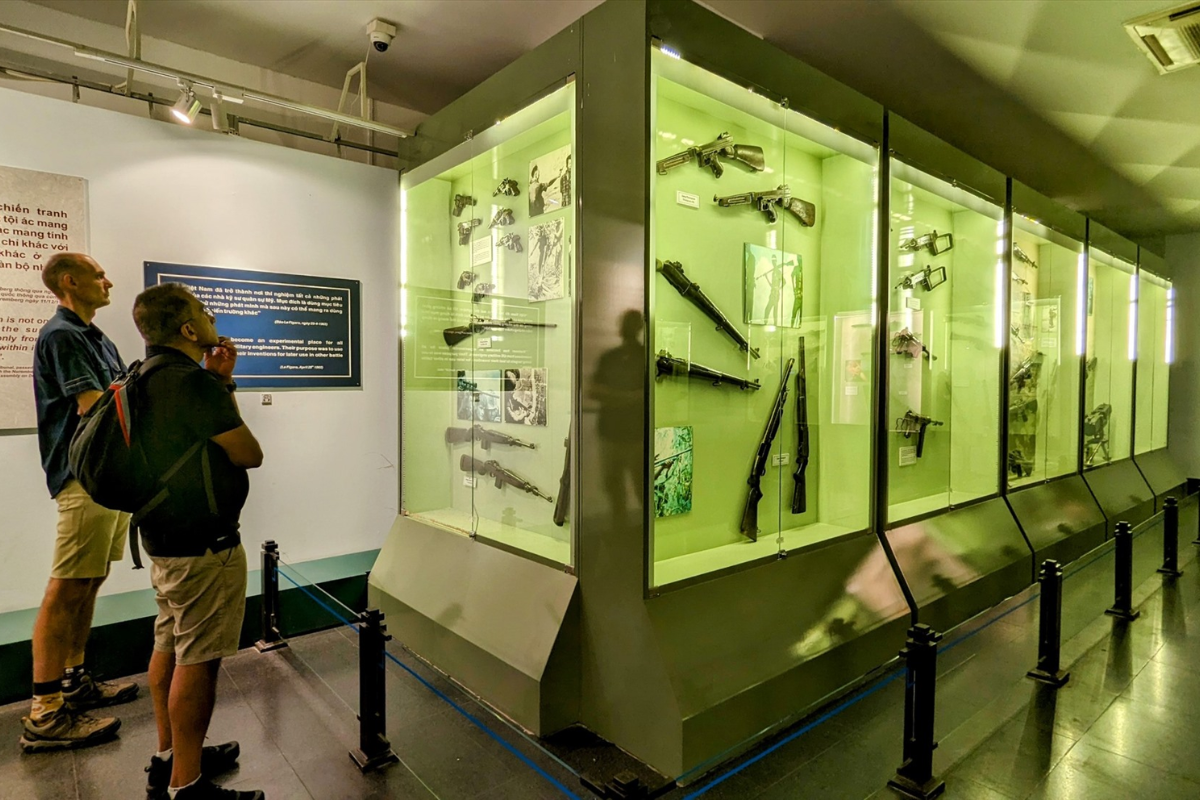
6.6. Explore Traditional Craft Villages
Vietnam’s craft villages are cultural gems. Over 5,400 such villages exist, especially in the Red River Delta. Bat Trang and Bau Truc are famous for pottery, while Van Phuc and Hoi An specialize in silk. Hue’s Incense Village offers a fragrant experience with hand-crafted incense sticks.
Visitors can witness live demonstrations and even try their hand at traditional crafts, enriching their cultural journey.
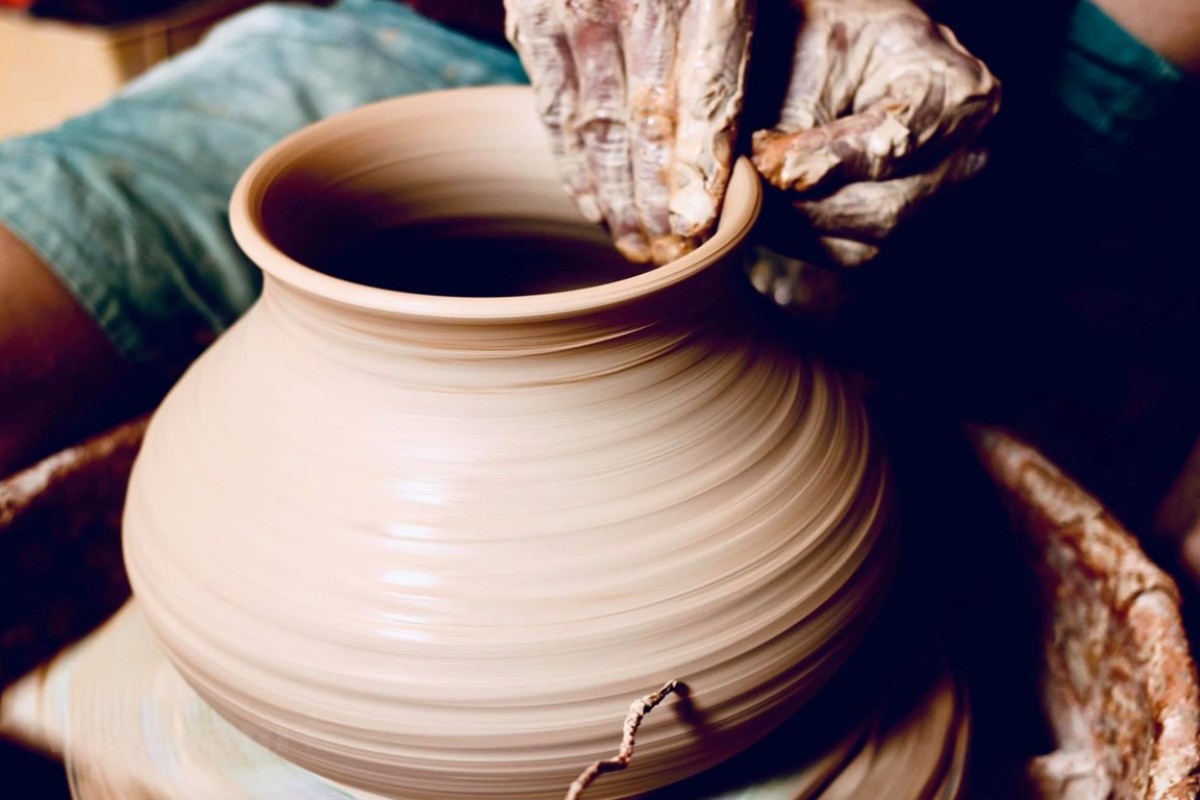
6.7. Visit Temples and Pagodas
Spiritual heritage is at the core of Vietnam’s identity. From the Perfume Pagoda in Hanoi to the towering Bai Dinh in Ninh Binh, each temple reflects unique architecture and religious importance.
Highlights include Thien Mu in Hue, Linh Ung in Da Nang, Long Son in Nha Trang, and iconic temples throughout Ho Chi Minh City. These sacred spaces provide not just beauty but also a peaceful atmosphere for reflection.
7. Cultural Insights into Vietnam
Vietnam’s culture is a vibrant mosaic shaped by its diverse history and the coexistence of 54 ethnic groups.
7.1. Ethnic Diversity
The country’s population comprises numerous ethnic communities, each adapted to its local geography—plains, highlands, mountains, or coastal areas—shaping distinctive traditions and lifestyles.
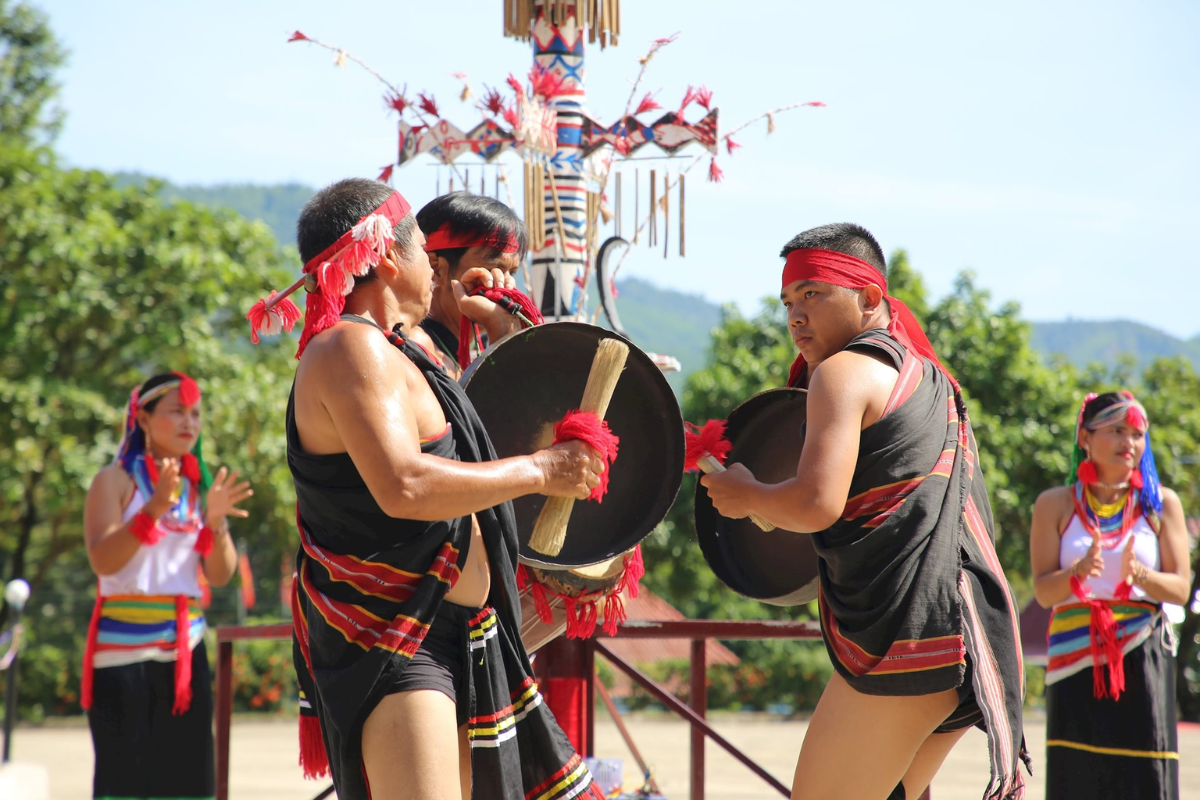
7.2. Language Development
Vietnamese evolved through Chinese influence and French colonization. Today’s official script, Quoc Ngu, is based on the Latin alphabet and includes tonal accents, making it uniquely expressive.
7.3. Everyday Customs
Vietnamese customs reflect practicality and community values. From balanced meals and region-specific housing to motorbike culture and communal ceremonies, everyday life is rich with tradition.
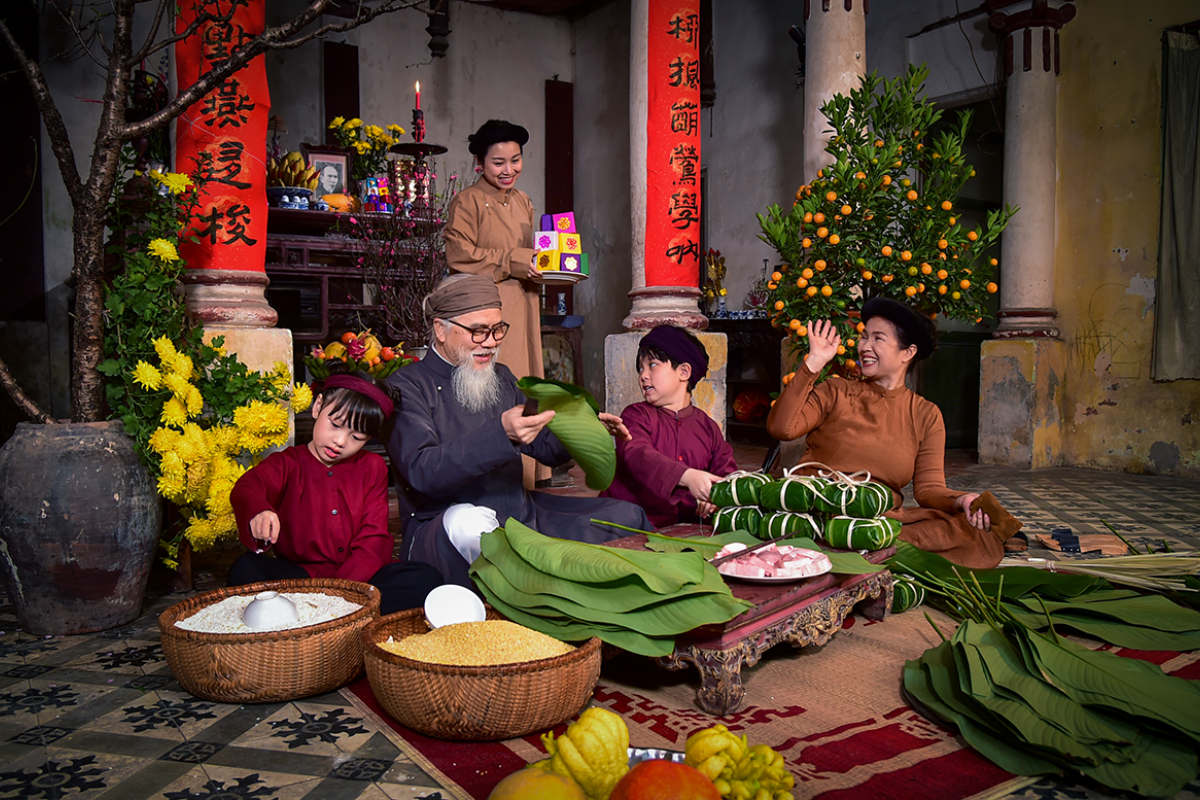
7.4. Traditional Attire
The Ao Dai is Vietnam’s iconic national dress, symbolizing grace and culture. Other garments like the Ao Tu Than and Ao Ba Ba highlight regional identities, while ethnic groups have their distinctive styles and materials.
.png-image-dxiggema.png)
7.5. Vietnamese Values
Hospitality, family ties, and mutual respect are cornerstones of Vietnamese culture. Visitors often find warmth and friendliness wherever they go, rooted in longstanding traditions.
.png-image-dukmoxfh.png)
7.6. Religion and Beliefs
Vietnam’s spiritual life combines folk traditions with major religions like Buddhism and Christianity. Ancestor worship, fertility, and nature-based rituals remain deeply embedded in cultural practices.
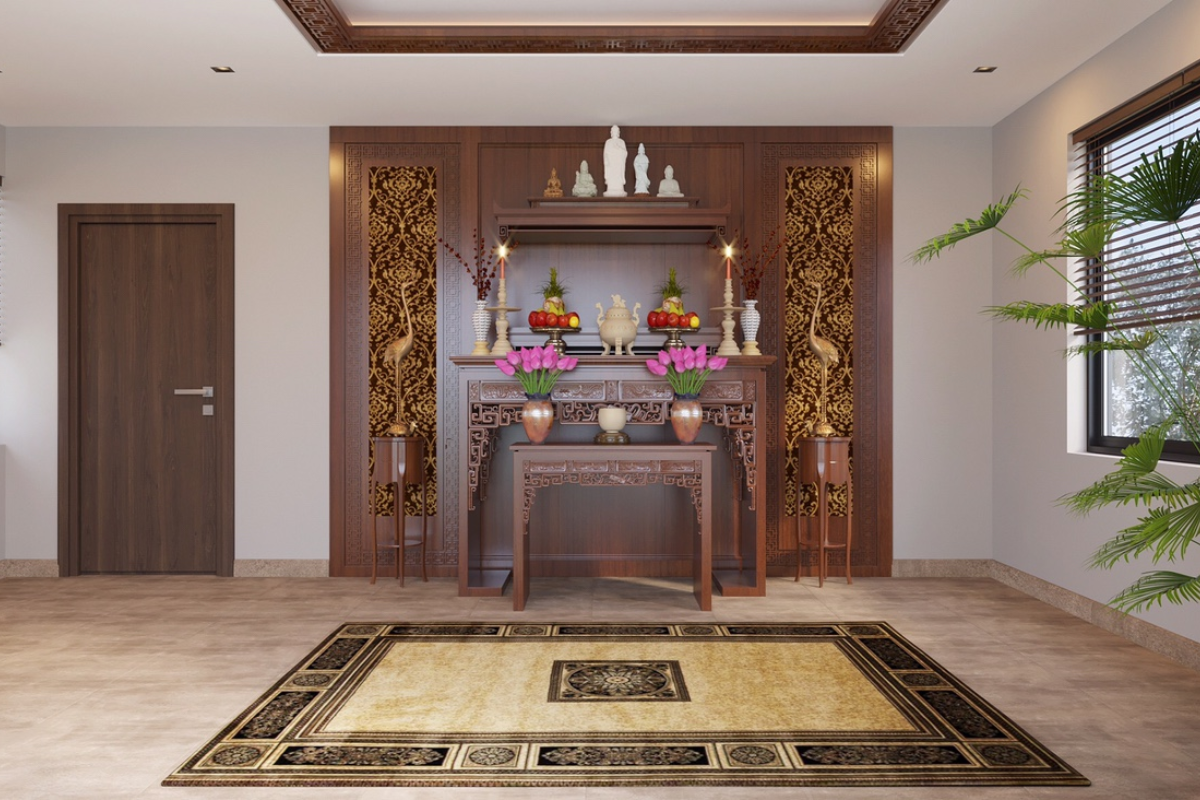
7.7. Celebrations and Holidays
Festivals are plentiful in Vietnam. Tet, Mid-Autumn, and regional harvest festivals are times of joy, tradition, and communal gatherings. National holidays like the Lunar New Year blend reverence and festivity.
.png-image-nhwohwdd.png)
9. Vietnam's Iconic Foods & Beverages
Vietnamese cuisine is a major highlight for travelers, attracting food lovers from across the globe. In 2023, Hanoi was recognized as “Asia’s Best Emerging Food Destination” at the World Culinary Awards, while Vietnam was honored as “Asia’s Best Culinary Destination 2022.” According to TasteAtlas, Vietnamese food ranks 6th in Asia and 20th worldwide—making culinary discovery a key experience in any Vietnam journey.
Vietnam's food culture varies by region: the North is known for its mild flavors, the Central region for its heat and spice, and the South for its sweetness. Must-try Vietnamese dishes include:
- Banh mi: A crunchy French baguette packed with pâté, meats, pickled veggies, and herbs
- Pho: Aromatic rice noodle soup with beef or chicken, topped with fresh herbs
- Bun cha: Grilled pork served with vermicelli noodles, herbs, and dipping sauce
- Goi cuon (spring rolls): Fresh rolls with shrimp, pork, and herbs wrapped in rice paper
- Banh xeo: Crispy savory pancake with pork, shrimp, and bean sprouts
- Bun bo Hue: Spicy beef noodle soup from Hue, infused with lemongrass
- Cao Lau: Hoi An’s signature noodle dish with pork and greens
- Mi Quang: Bright turmeric noodles with pork, shrimp, and quail eggs
- Com tam: Broken rice accompanied by grilled pork, fried egg, and vegetables
Vietnamese beverages also showcase the country’s love for fresh, natural ingredients. Noteworthy drinks include:
- Vietnamese coffee:
- Egg coffee: Hanoi’s specialty with coffee and whipped egg cream
- Salt coffee: A Hue favorite offering a salty-sweet twist
- Phin coffee: Classic drip coffee served throughout the country
- Kumquat tea: A honey-sweetened blend of green tea and kumquat
- Nuoc mia: Fresh sugarcane juice with a dash of kumquat
- Dua tuoi: Chilled coconut water straight from the coconut
- Hoi An herbal tea: A local mix of morning glory, pennywort juice, and dried longan
10. Vietnam Travel Guide: What to Prepare?
10.1. Currency
Vietnam uses the Vietnamese Dong (VND), with both polymer and paper notes available in denominations of 500,000; 200,000; 100,000; 50,000; 20,000; 10,000; 5,000; 2,000; and 1,000 VND. Each note is uniquely designed for easy identification.
As of January 2025, Vietcombank lists the exchange rate at 25,060 VND per 1 USD. Currency exchange is accessible at international airports (24/7) and at banks during business hours.
Cash is the preferred payment method in Vietnam. However, credit cards are commonly used in urban areas such as malls, hotels, and restaurants. Digital wallets like Momo and VNPay are increasingly accepted, especially in cities.
10.2. SIM Cards
Purchasing a local SIM card is a smart move for staying connected while in Vietnam. It provides affordable options for data, calls, and texts, and enables convenient use of navigation and ride-hailing apps.
Major telecom providers include Viettel, Vinaphone, and Mobifone. SIM cards are easily available at airports or phone stores, and you’ll need a valid passport and visa to register.
Popular tourist options include:
- Viettel SIM Tour: 60,000 VND for 15 days with 5GB of data; 100,000 VND for 30 days with 10GB
- Mobifone Happy Tourist HP2: 109,000 VND for 30 days with 8GB and 40 free calling minutes
eSIM packages are also available for tech-savvy travelers.
10.3. Visas
Vietnam waives visas for citizens of 26 countries. Among them, travelers from 13 nations—including the UK, France, Germany, Japan, South Korea, Russia, Spain, and others—can enter visa-free for up to 45 days.
From August 2023, e-visas became available to citizens of all countries, allowing multiple entries and up to 90 days of stay. The official websites for application are evisa.gov.vn and thithucdientu.gov.vn. Fees are $25 for single-entry and $50 for multiple-entry e-visas.
Applicants need a passport photo, personal info, and passport scan. Processing usually takes 3 business days, and accepted e-visas are valid at airports, land crossings, and seaports like Tan Son Nhat, Noi Bai, and Da Nang.
Tip: Ensure all info is correct and apply early to avoid delays.
10.4. Transportation
Getting to Vietnam: Major entry points include international airports in Hanoi (Noi Bai), Ho Chi Minh City (Tan Son Nhat), and Da Nang. Other airports like Phu Quoc and Cam Ranh also accept international flights. Overland travel from Laos and Cambodia is possible, but buses may be limited. Cruises from Thailand and Singapore offer scenic arrivals via Ha Long Bay or the Mekong Delta.
Traveling within Vietnam: Domestic air travel is the fastest way to move between cities. Carriers like Vietnam Airlines, Vietjet Air, and Bamboo Airways operate frequently and affordably.
For a more scenic route, the Reunification Express train spans 36 hours between Hanoi and Ho Chi Minh City, stopping at major hubs like Hue and Nha Trang.
Additional transport options include:
- Sleeper buses for intercity travel
- Motorbike rentals (150,000–300,000 VND per day)
- Bicycle rentals, particularly in Hoi An and Hue (30,000 VND per day)
- Taxis and ride-hailing apps for city travel
10.5. Health & Safety Tips
Health advice:
- Buy travel insurance to cover emergencies
- Consult a doctor for recommended vaccines or medications
- Carry a doctor’s note if you have a medical condition or allergies
- Pack essential supplies: repellent, painkillers, bandages, anti-diarrheal meds, sunscreen
- Be mindful of common risks like heat exhaustion, foodborne illnesses, pollution, and insect bites
Safety guidelines:
- Secure your belongings, especially in crowded areas
- Use hotel safes or lock valuables in your luggage
- Be aware of scams—ask prices in advance at markets or when using taxis
- Book tours through reputable providers
10.6. Communication
Understanding local etiquette is essential to smooth communication. Here are some tips:
- Maintain face: Avoid public criticism to respect social harmony
- Limit public affection: Displays of affection should be discreet
- Ask before taking photos: Always request permission before photographing locals
- Avoid pointing or patting: Especially avoid touching someone’s head or pointing at people
- Use non-verbal gestures: A friendly smile often helps break the language barrier
- Addressing people: Use “Em ơi” (younger), “Chị ơi” (older woman), “Anh ơi” (older man), or “Bạn ơi” (peer)
Helpful Vietnamese phrases:
- Hello/Hi: Xin chào!
- How are you?: Bạn có khỏe không?
- I’m fine, and you?: Tôi khỏe, còn bạn?
- What’s your name?: Tên bạn là gì?
- My name is ___: Tên tôi là ___
- How old are you?: Bạn bao nhiêu tuổi?
- I am ___ years old: Tôi ___ tuổi
- Nice to meet you: Rất vui được gặp bạn
- Yes: Vâng / Có / Rồi
- No: Không / Chưa
- Thank you: Cảm ơn
- No problem: Không có gì
- I am sorry: Tôi xin lỗi
- Goodbye!: Tạm biệt
11. More info about Vietnam that you might find useful
While exploring Vietnam information, travelers might find it helpful to learn about government websites, currency exchange locations, and more to better plan their trips.
11.1. Official government websites
Below is a list of Vietnam’s official government websites where travelers can access authentic information about this beautiful S-shaped country:
- The Government Portal: https://www.chinhphu.vn
- The National Assembly of Vietnam: https://quochoi.vn
- The Ministry of Industry and Trade: https://moit.gov.vn/en
- The Ministry of Transport: https://www.mt.gov.vn
- The Ministry of Planning and Investment: https://www.mpi.gov.vn
- The Ministry of Science and Technology: https://www.most.gov.vn
- The Ministry of Finance: https://www.mof.gov.vn
- The Ministry of Health: https://www.moh.gov.vn
- The Ministry of Foreign Affairs: https://www.mofa.gov.vn
- The Ministry of Culture, Sports, and Tourism: https://english.bvhttdl.gov.vn
- The Ministry of Education and Training: https://www.edu.net.vn
11.2. Foreign embassies in Vietnam
Before traveling to Vietnam, you can contact your country's Vietnam embassy for help and advice. Once in Vietnam, it's useful to keep embassy or consulate addresses handy for any assistance.
Embassies in Hanoi and their addresses:
- USA: 07 Lang Ha Street
- Brazil: D6/7, 14 Thuy Khue Street
- Cambodia: 71 Tran Hung Dao Street
- France: 57 Tran Hung Dao Street
- Laos: 22 Tran Binh Trong Street
- China: 46 Hoang Dieu Street
- Japan: 27 Lieu Giai Street
- Indonesia: 50 Ngo Quyen Street
- India: 58-60 Tran Hung Dao Street
- UK: 4F, Central Building, 31 Hai Ba Trung Street
- South Korea: 4F, Daeha Business Center, 360 Kim Ma Street
- Russia: 191 De La Thanh Street
- Spain: 25F, Daeha Business Center, 360 Kim Ma Street
- Italy: 9 Le Phung Hieu Street
- Australia: 8 Dao Tan Street
- Thailand: 63-65 Hoang Dieu Street
- Germany: 29 Tran Phu Street
- Malaysia: 43-45 Dien Bien Phu Street
- Singapore: 41-43 Tran Phu Street
Consulates in Ho Chi Minh City and their addresses:
- Cambodia: 41 Phung Khac Khoan Street
- Germany: 33 Le Duan Street
- India: Orchid Villa 14, An Phu Superior Villa Complex
- Indonesia: 18 Phung Khac Khoan Street
- Japan: 261 Dien Bien Phu Street
- South Korea: 107 Nguyen Du Street
- Laos: 93 Pasteur Street
- Malaysia: 9 Nguyen Van Huong Street
- Russia: 40 Ba Huyen Thanh Quan Street
- UK: 25 Le Duan Street
- USA: 4 Le Duan Street
11.3. Vietnam’s quick facts about education
Vietnam is renowned for its excellent education system, as reported by The Economist in 2023. Vietnamese students consistently excel in international tests covering reading, math, and science.
The country hosts many prestigious institutions such as Vietnam National University (both Hanoi and Ho Chi Minh City branches), Da Nang University, Hanoi University of Science and Technology, University of Economics Ho Chi Minh City, and National Economics University.
Students and researchers have access to a wealth of academic resources in Vietnamese and English, including platforms like Vietnam Journals Online, Vietnam Open Educational Resources, and the National Library of Vietnam.

11.4. About Vietnam’s currency
The official currency used in Vietnam is the Vietnamese Dong (VND). Commonly issued denominations by the State Bank of Vietnam include 500,000 VND; 200,000 VND; 100,000 VND; 50,000 VND; 20,000 VND; 10,000 VND; 5,000 VND; 2,000 VND; and 1,000 VND.
As of June 2024, the exchange rate is roughly 1 USD = 25,431 VND. Banks remain the most trustworthy and legitimate locations to exchange foreign currency into Vietnamese Dong.
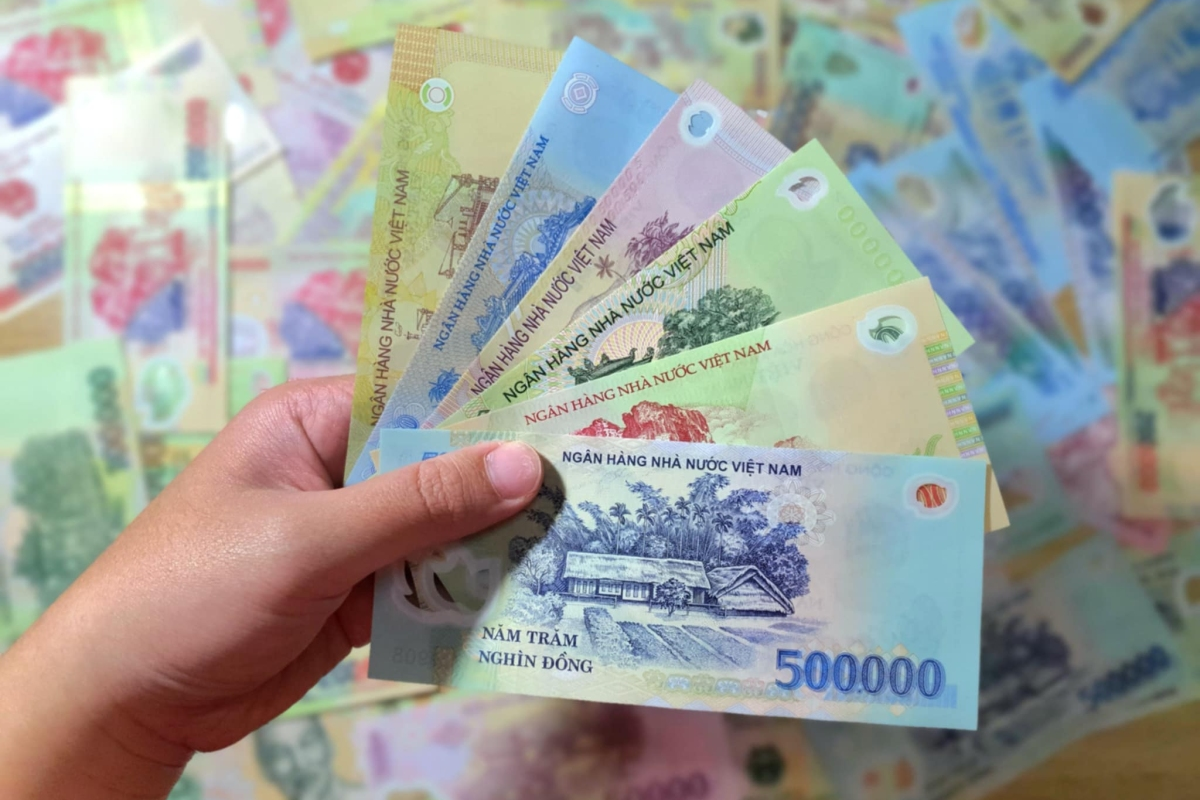
11.5. Cost of living in Vietnam
If you’re considering living in Vietnam as an expatriate and want to know the cost of living, here are some details. According to Numbeo, the largest global database on living costs, the average monthly expenses in Hanoi for one person amount to about 12,000,000 VND (excluding rent).
Renting a one-bedroom apartment in Hanoi typically costs between 6,000,000 and 8,500,000 VND monthly.
Ho Chi Minh City’s living expenses are slightly higher, averaging approximately 12,200,000 VND per month (excluding rent). The rental price for a one-bedroom apartment ranges from 7,500,000 to 12,000,000 VND monthly.
In Da Nang, the average monthly living cost is around 11,300,000 VND, with rents for one-bedroom apartments between 6,000,000 and 9,000,000 VND per month.
12. Frequently Asked Questions About Traveling in Vietnam
1. Is Vietnam a Safe Destination?
Absolutely. Vietnam is widely considered a safe destination for travelers. In 2024, it was named "Asia's safest destination" by the American travel website Travel Off Path.
.png-image-wyuynrcj.png)
2. Are Vietnamese People Friendly to Tourists?
Yes, tourists are warmly welcomed in Vietnam. In 2023, the Canadian travel platform The Travel ranked Vietnam among the world's top 10 friendliest countries for international visitors.
.png-image-cinerpmt.png)
3. What Is the Best Time to Visit Vietnam?
The optimal time for a Vietnam trip depends on the region:
- Northern Vietnam (Hanoi, Sapa, Ha Long Bay): September to November and March to April offer pleasant, dry weather. Avoid May to October when rainfall is high, impacting activities like Sapa trekking and Ha Long Bay cruises.
- Central Vietnam (Hoi An, Nha Trang): April through August provides great beach conditions, while rain is common from September to March.
- Southern Vietnam (Ho Chi Minh City, Mekong Delta, Phu Quoc): October to April is ideal. Monsoon rains dominate from May to September.
Travelers should also avoid Tet (Lunar New Year), when many businesses close and prices spike. For value and fewer crowds, try April-May or October-November.
4. What Is the Average Cost of a Trip to Vietnam?
A typical daily expense for travelers in Vietnam is about 1.7 million VND (approximately $69 USD). For two people on a week-long journey, the total costs can reach around 24.4 million VND ($962 USD), including accommodation, meals, local transport, and attraction fees.
5. How Long Should I Spend in Vietnam?
A two-week itinerary is ideal for exploring Vietnam comfortably. This allows travelers to visit three to four major cities across different regions without rushing.
6. What Should I Pack for a Vietnam Trip?
Your Vietnam packing checklist should include:
- Documents: Passport (valid for 6+ months), visa, travel insurance, cash (USD/VND), credit cards
- Clothing: Light clothes, rain jacket, modest attire for temples, comfy walking shoes, sunglasses, swimwear
- Health items: Sunscreen, mosquito repellent, medications, hand sanitizer, toiletries
- Electronics: Universal adapters, chargers, power banks, camera, useful apps
- Others: Backpack, water bottle, snacks, guidebook
7. Where Can I Find Great Hotels in Vietnam?
Vietnam boasts a wide selection of accommodations, from five-star resorts and charming boutique hotels to budget hostels. The country's growing hospitality industry ensures options for every traveler in key tourist areas.
8. Can Tourists Ride Motorbikes in Vietnam?
Traffic in Vietnam can be hectic, especially with the abundance of motorbikes. To legally drive one, foreign visitors need either a valid International Driving Permit or a Vietnamese driver’s license.
9. What Are Some Cultural Do’s and Don’ts in Vietnam?
Respecting cultural norms is essential while traveling in Vietnam. Here are some important tips:
Do:
- Remove shoes before entering homes and temples
- Dress appropriately at religious sites
- Request permission before photographing locals
- Use both hands when giving or receiving items
- Smile and be polite
- Eat respectfully
- Learn basic Vietnamese greetings
Don’t:
- Touch anyone’s head
- Point with fingers or feet
- Engage in public affection
- Wear revealing clothes in temples
- Photograph religious interiors without consent
- Discuss politics
- Lose your temper in public
10. What Unique Souvenirs Can I Buy in Vietnam?
Consider bringing home these distinctive Vietnamese items:
Traditional:
- Conical hats
- Embroidered textiles
- Silk garments
- Ao dai
- Water puppets
Food & Drink:
- Vietnamese coffee and filters
- Premium fish sauce
- Dried fruits and snacks
- Local spices
Crafts & Art:
- Bamboo crafts
- Ceramic pieces
- Folk paintings
- Hoi An lanterns
- Pearl jewelry from Phu Quoc and Ha Long Bay
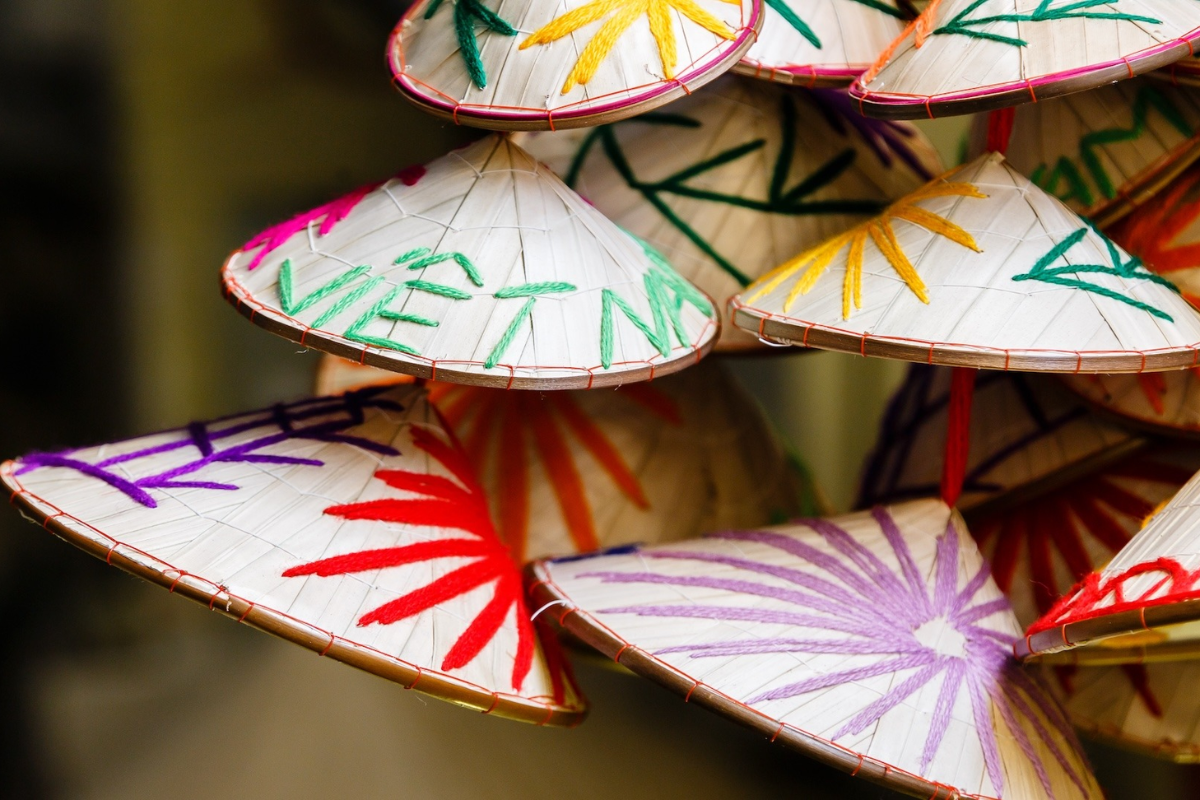
Vietnam promises a journey full of cultural immersion, breathtaking landscapes, and unforgettable experiences. From mouthwatering street food to serene natural wonders, it’s a destination that leaves a lasting impression.
Discover the captivating beauty of Vietnam with our expertly crafted tours that take you through its diverse landscapes, rich history, and vibrant culture. Explore our most popular Vietnam travel packages and experience everything from scenic highlands to tropical beaches:
Why Choose World Mate Travel for Your Vietnam Adventure?
- Carefully selected accommodations from mountain retreats to seaside resorts
- Tailored experiences including cultural encounters, nature hikes, and island getaways
- 24/7 customer support to ensure a smooth and unforgettable journey across Vietnam
Book your Vietnam adventure today and uncover the timeless charm and natural wonders of this incredible country!
Contact Us:
Email: sales@worldmatetravel.com
WhatsApp: +84988660505
